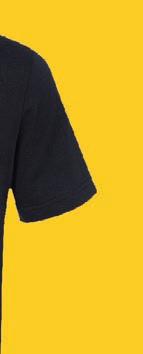The return of Captain Sky
 BY AARON COHEN |
BY AARON COHEN |



 BY AARON COHEN |
BY AARON COHEN |


03 Feature A small northwest Indiana butcher shop makes a go of it mid-pandemic with small farmers, small slaughterhouses, and naturally raised beef, pork, chicken, and lamb.

and state.
10 Reopening Essays on the hopes and horrors of returning to “normal”
routes in the city and beyond.
25 Interview How the filmmakers behind Mucho Mucho Amor: The Legend of Walter Mercado brought a Latino story to the masses
26 Movies of Note Desperados is a Netflix comedy flop; The Old Guard is a big-budget comic book movie that’s both entertaining and affecting; and Andy Samberg shows off his comedic and dramatic chops in Palm Springs
16 Visual Arts Chicago’s 21c Museum Hotel reopens with “This We Believe.”
18 Lit The American Writers Museum adapted to pandemic pressures with rich online content and virtual events.
19 Social Media #iPlan2Live takes over TikTok.
20 New Beginnings Steep Theatre loses its venue, but not its vision.
06 Joravsky | Politics Learning to love the never-Trump crowd at the Lincoln Project

08 Isaacs | Culture A revised law slashes casino profits for the city
21 Community The Chicago Artists Relief Fund cuts the red tape.
22 Transportation Check out the Mellow Chicago Bike Map, a newly expanded guide to chill cycling
28 Feature Chicago’s funk superhero Captain Sky releases his first album in 40 years—and this time his mission includes mentoring Black teenagers on the south side.
32 Chicagoans of Note DJ Hank, filmmaker and bike messenger
34 Records of Note A pandemic can’t stop the flow of great music.
CHICAGO READER | JULY 9, 2020
49,
Our critics review releases that you can enjoy at home.
TO CONTACT ANY READER EMPLOYEE, E-MAIL: (FIRST INITIAL)(LAST NAME) @CHICAGOREADER.COM
PUBLISHER TRACY BAIM
EDITORS IN CHIEF SUJAY KUMAR, KAREN HAWKINS CREATIVE LEAD RACHEL HAWLEY MUSIC EDITOR PHILIP MONTORO THEATER AND DANCE EDITOR KERRY REID CULTURE EDITOR BRIANNA WELLEN
ASSOCIATE EDITOR JAMIE LUDWIG
SENIOR WRITERS MAYA DUKMASOVA, LEOR GALIL, DEANNA ISAACS, BEN JORAVSKY, MIKE SULA EDITORIAL ASSOCIATE S. NICOLE LANE GRAPHIC DESIGNER AMBER HUFF

37 Early Warnings Rescheduled concerts and other updated listings
37 Gossip Wolf Naperville teen punks Protagonists get reissued a er 35 years, indie-pop trio Gosh Diggity add a little muscle to their tender sound, and Le Tour posthumously release what didn’t quite become their third album.

40 Savage Love Dan Savage gives advice to just another cuckin’ monogamous couple.
42 Jobs 42 Apartments & Spaces 42 Marketplace
ON THE COVER:
BY JEFF MARINI.

LISTINGS COORDINATOR SALEM COLLO-JULIN CONTRIBUTORS ED BLAIR, NOAH BERLATSKY, LUCA CIMARUSTI, MARISSA DE LA CERDA, MARI COHEN, JOSH FLANDERS, SHERI FLANDERS, JACK HELBIG, IRENE HSAIO, CATALINA MARIA JOHNSON, MONICA KENDRICK, STEVE KRAKOW, NOËLLE D. LILLEY, JAMIE LUDWIG, MAX MALLER, ADAM MULLINS-KHATIB, J.R. NELSON, JEFF NICHOLS, MARISSA OBERLANDER, MATTHEW SIGUR, CATEY SULLIVAN
DIRECTOR OF DIGITAL JOHN DUNLEVY SOCIAL MEDIA COORDINATOR JANAYA GREENE STAFF AND SPECIAL PROJECTS ASSISTANT TARYN ALLEN
STRATEGIC INNOVATION DIRECTOR MARIAH NEUROTH DEVELOPMENT DIRECTOR COLETTE WILLARD MEDIA PARTNERSHIPS COORDINATOR YAZMIN DOMINGUEZ EXECUTIVE ASSISTANT SANDRA L. KLEIN SPECIAL EVENTS CONSULTANT KRISTEN KAZA
ADVERTISING 312-392-2970, ADS@CHICAGOREADER.COM CLASSIFIEDS: CLASSIFIED-ADS@CHICAGOREADER.COM
Amid a pandemic, the count is more important than ever.
Most arrested at the protests were Black
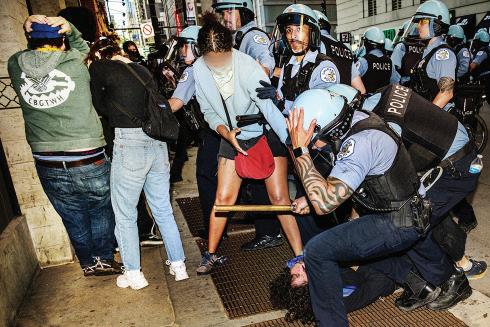
TO JEFFMARINI.COM.
MORE OF MARINI’S WORK,

VICE PRESIDENT OF SALES AMY MATHENY CLIENT RELATIONSHIP MANAGER TED PIEKARZ SENIOR ACCOUNT REPRESENTATIVES LENI MANAA-HOPPENWORTH, LISA SOLOMON
CLASSIFIED SALES MANAGER WILL ROGERS
NATIONAL ADVERTISING VOICE MEDIA GROUP 1-888-278-9866 VMGADVERTISING.COM JOE LARKIN AND SUE BELAIR
DISTRIBUTION CONCERNS
distributionissues@chicagoreader.com 312-392-2970
CHICAGO READER L3C
BOARD PRESIDENT DOROTHY R. LEAVELL TREASURER EILEEN RHODES
AT-LARGE SLADJANA VUCKOVIC

CONSULTANT CAROL E. BELL
THE FISCAL AGENT FOR THE CHICAGO READER IS THE OAK PARK-RIVER FOREST COMMUNITY FOUNDATION.
READER (ISSN 1096-6919) IS PUBLISHED WEEKLY BY CHICAGO READER L3C 2930 S. MICHIGAN, SUITE 102 CHICAGO, IL 60616 312-392-2934, CHICAGOREADER.COM
COPYRIGHT © 2020 CHICAGO READER
PERIODICAL POSTAGE PAID AT CHICAGO, IL
ALL RIGHTS RESERVED. CHICAGO READER, READER, AND REVERSED R: REGISTERED TRADEMARKS ®
Silicone Prairie released an EP that includes a cover of notorious Chicago band the Mentally Ill.
‘Filling out the census is like wearing a mask’
An analysis raises questions about equitable policing.
A new wave played at the wrong speed





A small northwest Indiana butcher shop makes a go of it mid-pandemic with small farmers, small slaughterhouses, and naturally raised beef, pork, chicken, and lamb.




 By MIKE SULA
By MIKE SULA








The last fun party I went to was Dumpling Wars 2020 in late February at Marz Community Brewing. I was a judge for the contest, which was jam-packed with people inhaling momos, mandu, khinkali, and soup dumplings. There was a popular vote on the 20 contestants, and the judges picked their own favorite. After minimal debate we decided that best in show was a blacksquid-ink empanadilla stu ed with wild boar chorizo, perched in the bowl of a spoon atop a crumble of cured egg yolk with salsa brava and manchego aioli.
Relative to the other entries, this was a next-level dumpling, a striking, expertly plated synergy of contrasting textures, colors, and fl avors. But the guy who made it, unlike the other contestants, was neither a working professional chef nor an amateur cook—nor someone we had ever heard of before.
Ricky Hanft is a butcher with a little shop in a little town in northwest Indiana. I didn’t have much chance to talk to him that night, but I took his card and stalked the Wurst’s Instagram account over the coming weeks. It hadn’t opened yet, but he was teasing out




continued from 3
his upcoming debut with mesmerizing blackand-white shots of the deer processing work he was doing for local hunters in order to raise capital. His personal account had even more intriguing stu : venison liver sausage; shaved corned beaver with cabbage, beaver stock-horseradish velouté, and caviar; dryaged squab with Asian pear, Thai chili, and tamari-cured egg yolk.
What the heck was going on in Griffith, Indiana?
Turns out Hanft has worked as a line cook, staging at Gilt Bar and the Publican during a brief run in culinary school. He was also on the opening crew at Publican Quality Meats, and he spent a summer in the kitchen at 3 Floyds. But those jobs didn’t pay the bills.
“I got into ironworking right after high school,” he says. “I’m fourth-generation, so it’s kind of a rite of passage. This is what the males in my family do.” Working in the steel mills and oil refineries paid for a house when he was just 22, but shortly after that the housing market collapsed and ironwork became scarce. He had to find another way to get by. Cooking was what he did to pay the
bills between ironworking.
But in 2014 he decided he hadn’t seen enough of the world, so he sold his house and headed east to a job on a bridge deck in New Haven, Connecticut. But something kept pulling him back to food.


A friend from PQM was interviewing for a job with Josh Applestone, a pioneer in the craft butchery movement, who was opening his namesake company selling organic, grass-fed custom-cut meats in New York’s Hudson Valley. He invited Hanft to a barbecue Applestone was throwing, and the boss was intrigued that Hanft knew both food and how to fabricate metal.
Applestone hired Hanft as an apprentice, and within a few years he had worked his way up to plant manager in a white, windowless refrigerated USDA facility where “all I did all day every day was cut and process. It was really nice because that’s how you get good.”
Still, he spent a lot of time perfecting dog food and hot dogs, but it wasn’t the “super sexy dry-cured charcuterie” he’d dreamed of. With Applestone’s blessing he took a stage at the Local Butcher Shop in Berkeley, California, and was quickly appointed manager. At
Applestone, meat was sold out of refrigerated vending machines for customers who knew exactly what they wanted, but the Local Butcher Shop owners Aaron and Monica Rocchino went above and beyond, “to where people want you to cut a pound of dog food into eight individually wrapped pieces so they’re exerting no energy to feed their animal.”
Hanft took enough away from each experience that he began to hatch a plan for a shop of his own. On a visit back home, he met Steve Howe, a former schoolteacher who was raising hops and hogs on 30 acres of farmland that had been in his family since 1851. Howe, like Hanft, grew up in Highland, and schooled him on the plight of small farmers in northwest Indiana who were trying to raise pastured, antibiotic- and GMO-free livestock, but were kneecapped by a market structured for large commodity producers—particularly when it came time to slaughter and process the animals.
Compared to the slaughterhouse hack jobs farmers had to live with, Howe believed Hanft’s butchering skills—cutting and selling—could benefit the whole community. These farmers “spent all this time raising this
Search the Reader’s online database of thousands of Chicago-area restaurants at chicagoreader.com/food
beautiful animal and it comes back all hacked up,” says Hanft. He says Howe said to him, “If there was ever a time you would be interested in coming back I would do everything I could to help you in terms of lining up farms.”
Hanft decided to give it a go last spring, when he returned home and applied for a commercial line of credit from a local bank to build out a space on Gri th’s main drag next to a deli and down the street from a taxidermist. That’s when he started processing deer (and beaver and wild boar).
Howe and Hanft developed standards with the farmers—cows are grass-fed and grass-finished; pigs live on pasture; there are no GMOs in any animal feed; and they’re given no antibiotics. “I was able to put together a deal with them that we’ll buy all their animals so they can just focus on farming and then they don’t have to worry about being salesmen on top of that,” says Hanft. “We collectively determine what everybody needs to make in order to keep the lights on.”

Then the pandemic hit, which stalled Hanft’s loan and everything else except the pastured cows and pigs whose slaughter dates had been booked a year in advance in

time for a May opening. And in time for major slaughterhouse shutdowns that fl ooded the independent operations with commodity animals.




Hanft couldn’t cancel his slaughterhouse appointments—the farmers were counting on him too. He had to scramble. His parents mortgaged their house and gambled their retirement on the build-out, while he had to put off hiring help that would allow him to produce value-added products like stocks and soups. “You buy an animal, you sell that animal, and that gives you enough money to buy the next round of animals,” he says. “So I was sitting on fi ve beef and numerous pigs prior to even opening. I had to get creative in terms of not only what I was gonna do with them but how I was gonna store them.”
He also wasn’t able to get a health inspection until his construction was complete, but by that point his walk-in was operational and he jumped through hoops to get the Indiana State Board of Animal Health and the Lake County Health Department’s approval to begin dry-aging them. In the meantime, he got to work making sausage: brats, Polishes, Italian, Thai, loukaniko, chorizo, and all-beef hot dogs based on a recipe he worked on at Applestone’s with the help of a German master butcher.
I tried those dogs a week after Hanft opened in mid-June, a month and a half late. They’re warmly spiced, intensely beefy, and they snap audibly from a block away. I also

bought a couple of freshly cut, deeply flavorful rib eyes raised by Third Day Farm in Walkerton, Indiana, each capped with the telltale yellow fat of an animal that spent its entire life on grass. I can’t stop thinking about them.



The day I stopped in, Hanft’s mom and dad were working behind the counter, and he was going crazy trying to catch up in the days leading up to the Fourth of July.
Still he’s made commitments and he’s committed to making it work. And he still keeps something of a low profi le. The shop has no phone and no e-mail, partly because he wants customers to recognize that each cow yields only a certain number of rib eyes, each pig so many chops, each chicken just two breasts. He doesn’t have time to answer the phone anyway, but this is largely to discourage people from snapping up prized cuts before they’re even on display. “What we have in the case that day is what we have available,” he says. “In my mind that’s the only fair way to do it.”
But he does have time to advise walk-in customers on what to do with all the other cuts he has. If you’re lucky he might have pork from the Mangalitsa-Berkshire crosses Howe raises. Howe says it’ll be in stock regularly in December. “They have a healthy creamy fat as well as a nice muscular physique,” says Howe. “Best of both worlds.” v

As hard as this is for me to admit, I’ve been turning to Republicans to help me get through the horrors of Trump.
Well, not just any Republicans. But the renegade, never-Trumpers known as the Lincoln Project, a political action committee whose members include strategists for both Bushes and John McCain.
In other words, people with whom I’m generally at odds.
But they despise Trump—and Trumpism— as much as I do. And they’re not afraid to say it, in one powerful Trump-bashing commercial after another.
Like the one that depicts Trump as a doddering old man. Or the fellow-traveler one, spoken in Russian, linking Trump to Putin, Lenin, and Stalin.
And the one calling him a coward because he dodged the draft instead of going to Vietnam, and the one linking him to the Confederate flag, and the one blaming him for pretty much everything that’s wrong with America
today.
They’re turning all the tricks of the Republican trade against Trump. Doing to him what he wants to do to Biden. Going negative. Really negative. And, folks, I hate to admit it—but I love it. Keep ’em coming, Lincoln Project.

It’s about time that the other side played this game. Even if the other side consists of Republicans going after one of their own.
I’ve got a feeling the Lincoln Project crowd sees people like me the way I see them—temporary friends, albeit of the enemy-of-myenemy persuasion.
As they say on their website: “Our many policy differences with national Democrats remain. However, the priority for all patriotic Americans must be a shared fidelity to the Constitution and a commitment to defeat those candidates who have abandoned their constitutional oaths, regardless of party. Electing Democrats who support the Constitution over Republicans who do not is a

All that matters for now is that we have a common foe.
worthy e ort.”
It’s almost surreal that I’d find myself temporarily allied with this bunch, given my lifelong enmity to the GOP, an attitude I inherited from my late mother, a New Deal Democrat.
One of my earliest memories is accompanying her to the polling place where she voted not so much for JFK as against Richard Nixon.
My parents and their friends hated Nixon—the man who invented the Southern Strategy, which Trump is trying to use to win reelection.
The Republicans shamelessly exploited white fears, resentments, and hostilities toward Black people to move the country to the right on just about every issue I can think of—from the environment to abortion to education to taxation to unions and so on.
For years, the Republicans picked at our racial wounds, hoping to infl ame white people with a sense of victimhood.
That tactic was on full display this weekend with Trump’s speeches at Mount Rushmore and the White House. Followed by his tweet championing the Confederate flag and denouncing NASCAR for taking a stand against racism and for racial harmony.
But they were playing this game before Trump.
Before Trump, there was Ronald Reagan’s infamous 1980 campaign speech in Neshoba County, Mississippi—close to where three civil rights workers had been murdered by the Klan.
That speech—in which Reagan called for “states’ rights”—helped snatch the south back from President Jimmy Carter, the former governor of Georgia. Carter was supposed to be the bellwether of a more moderate, tolerant southern man.
With Reagan’s victory, it’s been downhill for Democrats in the south—particularly Georgia—ever since.
In 1988, George Bush—who was supposed to be a moderate Republican—whipped up white fears with the infamous Willie Horton commercials against Michael Dukakis.
The commercials highlighted the story of Horton, a Black prisoner who had committed rape after being released on a weekend furlough program that Dukakis had supported while governor of Massachusetts.
As Bush’s chief strategist, Lee Atwater, put
it: “By the time we’re finished, they’re going to wonder whether Willie Horton is Dukakis’s running mate.”
That Horton commercial was not actually produced by the Bush campaign. It was produced by a PAC that wanted him to win.
So, there’s a certain irony that the Lincoln Project—another PAC—is playing the same game 32 years later against Trump, hoping to undo some of the damage that the Willie Horton commercial caused.
By 2004, Republican strategists were also employing homophobia to frighten voters away from the Democrats.
I’m convinced that George W. Bush won Ohio—and the Electoral College—with the Karl Rove strategy to relentlessly run ads linking John Kerry to gay marriage.
They turned the issue toxic for Democrats who should have known better—like Barack Obama, then running for senator from Illinois.
As a state senator from Hyde Park, Obama had been for gay marriage. As a statewide senatorial candidate in 2004, he was against it.
Obama later came back to supporting gay marriage—after he was reelected as president in 2012. He called it an evolution of his attitude on the subject. So, you might say he devolved before he evolved.
I’m not just picking on Obama. That’s how it goes with Democrats. In the face of the Republican attack ads, they retreat—so worried about losing the “silent majority.”
And they voluntarily move right, selling out their principles. Don’t worry , they tell us. We’ll regain those principles once we are back in o ce
But then there’s always another election. And so the center moves right. And the Republicans “win” even when they lose. As they did to Obama in the senate race of 2004.
I’m hoping that when this presidential election is over and our common foe has been defeated, Lincoln Project Republicans will show they’ve truly learned from their past.
And that they’ll be a tad more conciliatory and not treat every tax hike on the rich as the first step towards Bolshevism. As they’re currently doing in Illinois with Governor Pritzker’s fair tax proposal.
But, first things first. Beating Trump.
Like I said—keep ’em coming, Lincoln Project. v
@bennyjshow

It is against the law in Cook County to discriminate in the rental and use of housing because of:
Race Gender Sexual orientation Ethnicity Family status Gender Identity Religion Disability Criminal history Source of income (including housing choice vouchers) and other classes
Did you know that refusing to rent, lying about whether an apartment is available, and showing apartments only in certain areas, buildings, or parts of buildings is housing discrimination?
NCR’s Fair Housing Program offers outreach and education to all and legal representation to people experiencing discrimination. It investigates possible housing discrimination and assists clients in filing and resolving discrimination complaints to address violations and prevent future discrimination.
NCR’s Housing Program educates tenants and landlords about their rights and responsibilities under the Chicago Residential Landlord-Tenant Ordinance regarding leases, repairs, security deposits, and much more. The program provides assistance to tenants and landlords to improve the rental experience.
For more information about housing discrimination or if you feel you have been discriminated against, please call or email us today. Our services are free and confidential. If you are a tenant or landlord and want to attend a training session, please contact us.
1530 W. Morse Ave., Chicago
773-338-7722
The
A revised law slashes the profits for city and state.
By DEANNA ISAACSHey, sorry to hear about your gambling losses.
What, you don’t gamble? No matter; if you’re paying taxes in Illinois, you’ve come up a loser. You just might not have noticed yet. Given our daily dose of previously unimaginable bad news, it would have been easy to miss the fact that on June 30, Governor Pritzker signed the legislation that’ll finally allow a casino to be built and operated in Chicago.
What he approved, however, was not the fair and friendly-sounding city-owned casino Mayor Lori Lightfoot campaigned on. That idea pretty much disappeared the moment she was elected.
It’s also not the three-way equal profit-sharing deal that emerged in Springfield last summer, while private ownership also somehow slipped into the mix. Under that plan, the casino’s adjusted gross revenues (the money left after winning bets are paid) would be evenly split—33.3 percent each—between city, state, and the newly integral private owner.
The legislature passed (and the governor signed) that deal last summer. It was loaded up with a jackpot of benefits for entrenched gambling industry owners—a massive ex-

pansion that more than doubled the number of gaming positions in the state and lowered taxes on existing casinos.
But, oddly, it didn’t bring a casino to Chicago. While it looked like a done deal, and a public conversation was immediately launched about which Chicago neighborhood would land it, the fact was that the fine print included a stumbling block big enough to keep the equal profit-sharing—touted as exceptionally generous to city and state—from happening. The obstacle: a mandated feasibility study, conducted by a Las Vegas consulting firm. The study concluded (surprise!) that the government share of profits under the three-way split was so generous as to be “onerous”: no private owner would want the deal.
Since investors have been salivating over the prospect of a casino in Chicago for decades, it might have been interesting to test that conclusion by giving them a chance to step up, but that didn’t happen. The study was accepted as fact, and Lightfoot had an excuse to create a much less equitable plan.
What we wound up with, in the recent revision to last year’s law, is a graduated tax structure that drastically reduces the share
of profits for both city and state. It’s ba ingly complicated, but, for example, the city’s share of the first $25 million from slot machines (the main source of casino revenue) will be just 10.5 percent, and the state’s share will be 12 percent. (Doing the math, a combined 22.5 percent, compared to the 66.6 percent the 2019 law stipulated.) Only if the casino makes more than $1 billion annually on slots, and only on the tiny slice of that revenue beyond $1 billion, will the graduated rates exceed what the equal-sharing deal would have yielded for the city and state.
Looking for someone who could shed light on this, I reached out to University of Illinois professor emeritus John W. Kindt. He was in Atlanta, having just testified on the subject of gambling at the Georgia state legislature.
“I think Mayor Lightfoot has caved in to the gambling lobbyists and to their little game of continually lowering their own taxes,” Kindt told me. Chicago should look to Canada, where the government owns most of the gambling facilities, he says. “The same companies complaining that their taxes are too high in Illinois are working on management contracts there, and happy to get a small management fee.”
The value of a casino license now, especially one in Chicago, is probably close to one billion dollars, according to Kindt. But, he says, “committees in the Illinois legislature are stacked with progambling people and their buddies. They don’t care about the facts or the finances. The first ten Illinois casino licenses, back in 1990, were worth about $500 million each. They were given away to political insiders for $25,000 each.”
As for the graduated tax scale, which he says is structured so they’ll “never or barely” hit the highest rate: “That’s all legerdemain— sleight of hand to keep people guessing what they’re really paying in taxes.”
The law passed last summer also legalized online sports betting, a major step on the path to the virtual casino of the future. “The goal of the industry is to put 24/7 real-time gambling on everybody’s cell phone,” Kindt says. The Illinois tax on the profits from this sure-to-be immense online handle? A paltry 15 percent.
Kindt, who’s been analyzing this stuff for decades, says, “The people of Illinois should be outraged.”







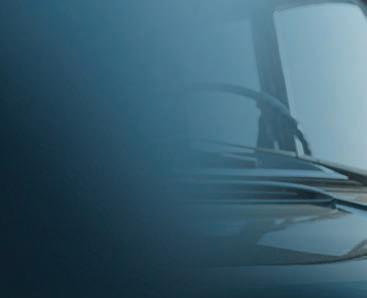














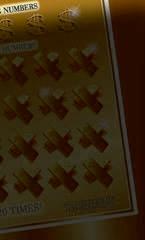







Essays on the hopes and horrors of returning to “normal”
APARTMENT TOURS ARE like first dates, in that you often know you’re not interested within a few seconds of introduction, and must politely smile and nod your way through a sales pitch anyway. I’d been viewing apartments, masked and gloved, for a few weeks when I found The One: an implausibly large one-bedroom with air conditioning a block from the Red Line in Rogers Park. The moment I stepped inside the empty unit, I began sketching a layout in my mind: a couch, comfortable writing chair, and co ee table near the living room windows; a proper desk for my work computer; my kitchen table and chairs in the dining nook ( the dining nook! ). This apartment, I knew, belonged to the best of all possible futures, the universe in which I become the type of person who makes smoothies with kale and protein powder and hosts parties and never has to weigh whether or not to put on concealer before a Zoom call because my skin is perfect.

This was the first time in a long while that I’ve been able to imagine an ideal future. In January, I fi lled the fi rst page of a notebook with resolutions: lose 30 pounds, land a byline in the New York Times or the New Yorker, go out with friends every weekend. We make plans, and coronavirus laughs.
A little over a year ago, my vision of the future dissolved under very different circumstances. Midway through my senior year of college, I began hearing footsteps outside my apartment door at all hours of the night. Gradually, I came to the realization that they belonged to a group of nefarious strangers determined to break into my bedroom and abduct me, and started sleeping with the lights on. I began leaving my apartment less and less, unsettled by the sense that some of the people who walked past me as I crossed the street were real, and some were not; at Target, I wandered the aisles aimlessly, unsure of what I’d gone there for, and certain that the other storegoers and employees were staring at me and whispering. I took the train to the hospital one day, and left a week later with a new handful of prescriptions and an overwhelming sense of uncertainty.
If you’d asked me a year ago what kind of future I imagined for myself, I would have described living in my parent’s basement in New Jersey. I could never have imagined a universe in which the meds worked, and I’d work in journalism, and I dug up the perseverance to put one foot in front of the other, day in, day out, until I no longer felt like I was tiptoeing across a high wire. The irony is ripe—I fi nally caught a break just in time to navigate a global catastrophe. Having already emerged out of such a state of uncertainty once has in some ways prepared me for the present moment. I tend toward pessimism, because it is fun and feels sophisticated, and because my brain chemistry is bad, but it’s difficult to remain a pessimist after experiencing such an improbable reversal of fortunes. “Hope for the best, prepare for the worst,” is grating, as all aphorisms are, but the sentiment holds water.
In a few weeks, I’ll be packing up my things into boxes. Moving is miserable, but there is no better feeling than having just moved, the apartment neater than it will ever be again and the neighborhood yet to be explored. I’m trying to tell myself that it’s OK to feel hopeful in this moment—hopeful that Ikea will have the perfect rug to bring my new living room together, that the New Yorker will eventually take one of my pitches, that things might return to normal sooner rather than later.
—RACHEL HAWLEYto follow for what ends up amounting to my privilege. I’ve been without many times in my life and perhaps part of me thinks, “Hey, I can get groceries delivered to my house like a regular middle-class person, woo hoo, take that gas station ramen!” It’s a fun privilege. I can argue that I’m one of those people who tips above and beyond, allowing delivery drivers to feel the immense power of my guilt through their rounded-up (always at least 30 percent of the total) gratuity. I can hear my field worker ancestors yelling at me with sarcastic disdain as I write this, “Oh REALLY, Miss 30 Percent?! How generous you are!”
I went to the grocery store a few weekends ago on a Saturday morning and had to wait in line at the checkout for a few minutes. While I moved back my cart to get behind the distance tape on the floor, I looked around at everyone else waiting in line. All masked, as far as I could see. And still, the little voice in my head (maybe the ancestors again) was shouting, “We’re all going to die.” I don’t have any answers. I’m just filling my mouth with cheese until I can’t anymore.
new masks, an upgrade from napkin/scarf/ bandana placeholders. Six-feet markers dot the floor and the loudspeaker reminds us of CDC guidelines. Still incapable of judging just how much two people can carry, we overfill the cart and have to call an Uber again.
Week four: In search of alternatives, we put ourselves on the long waitlist for Imperfect Foods grocery delivery.

Week five: We explore Mariano’s just to liven things up. Determined to avoid a rideshare, we walk home. Our shoulders are bruised from all the “necessary” gallons of milk and ice cream and liquor that weighed down our bags. We remain too lazy and too stubborn to purchase a personal grocery cart.
I KEEP ORDERING takeout. There’s some measure of reason to this: it’s good to limit my exposure to big groups of people at the grocery store and farmers markets. I have a job and lose track of time, making it hard to plan meals. I live alone and sometimes go by the Mike Royko System of Food Shopping for the Single Man (never do it unless there’s absolutely nothing there, not even ice). An honest attempt to shift to more frequent grocery visits during this pandemic has resulted in the same “only if I’m desperate and only if the store’s empty” policy, supplemented by grocery delivery services, which is basically takeout: you still tip a driver, you still call to order, they still have downtime in a car with your food and beverages and perhaps a moment to glance down at your pile of cheese-covered whatever-it-is and make a snap judgement about what your life must be like.
I could make the argument that having at least one of the preexisting conditions that makes the CDC say “uh, you may want to stay inside,” it’s somehow my duty as a thoughtful person to get grocery and food delivery. I could also make the argument that without frequent access to a car (and the game of Russian roulette the CTA buses near my house have been lately, with their maskless riders that eschew distancing) it’s tough for me to get to the grocery and back.
These are terrible rabbit holes of arguments
A friend posted a video to Instagram from a recent hiking trip. She zoomed in on a great shot of a turkey vulture chowing down on dinner in the middle of a field. You can’t tell what the vulture is eating at first (the tall grass makes it look like dinner is a pile of discarded beige plastic bags), but then the bird grabs hold of an end of its meal and lifts up the tail and lower half of what appears to be a dead coyote. The bird flips the tail around for a second and then brings it back to the ground, chomping and chomping. My mind drifts as I watch and I daydream of vultures gathering around my body, lying on the ground. “Big creatures,” one vulture says to another, “lots of fat.” —SALEM COLLO-JULIN
MY QUARANTINE BUBBLE includes me, my girlfriend, and the Jewel-Osco down the street. Groceries have been a necessity, a hurdle we’ve all had to face over and over again in the midst of this hellscape.
Week one: Leaving the house in a makeshift mask feels like being plunged into a dystopian novel, the sense of fear and urgency in the air palpable. No crazy apocalypse preparation, we only want to go as long as possible before shopping again. The shelves are ravaged. We still manage to overfill our cart and are ashamed to call an Uber to transport us less than half a mile home.
Week two: Don’t you know, people consume a lot more food when they’re home all day, every day. It seems like we’re out of everything.
Week three: We return to Jewel wearing our
Week eight: With a full cart and all of our reusable Wegmans bags perched on the self-checkout machine, a Mariano’s employee tells us that reusable bags aren’t allowed anymore. She stands over us as we fumble to refold the bags and pack groceries into plastic. “Please place the item in the bagging area,” the self-checkout machine screams. Shoppers stare as our bags fall over and rip, and stray lemons roll across the floor.
Week 12: Our only non-grocery-store adventure of quarantine, a nearby Black Lives Matter protest. “Think of it like going to the grocery store,” my girlfriend says. “It’s just one of the necessary things we have to do.”
Week 13: As if delivered by God, a giant box of Imperfect Food groceries appears at our apartment. It’s ugly, as promised, yet it’s the most beautiful food I’ve ever seen.
Week whatever: Masking up and heading to the grocery store is a taste of freedom just as much as it is a chore. It’s my framework for quarantine, almost the only place that exists outside of my apartment. There are now more places to go, but I can’t help but prioritize the data as politicians prioritize the economy.
—TARYN ALLENTHIS YEAR, I finally visited my friend in Estonia. I had birthday cocktails in Manhattan, cuddled on the couch at a palatial home in Akron, sat at the kitchen table with a friend’s parents in Virginia, toured a home renovation in Arizona, watched the plants grow on a courtyard in LA, and been entertained inside the homemade lip-sync studios of a dozen friends of a friend around the country. I also, of course, have been to nearly every room of culture editor Brianna Wellen’s place.
Since the beginning of quarantine, my boozy friends have taken the proliferation of videoconferencing in our lives to its next logical conclusion: virtual happy hours. For those of you who have been FaceTiming, WhatsApping, Skyping, and Google Hangouting interna-
“I am trying to tell myself that it’s OK to have hope in this moment.”
tionally for years now, I know that we’re late to this party.
But for my Gen X friends and our families, video calls have been a revelation. I don’t know why it didn’t occur to us before that the smiling faces of Girl Erinn in Estonia and Boy Aaron in Pittsburgh have been just a click away since they moved out of Chicago years ago, but now that it has, we have a standing monthly Family Meeting. I have a quarterly catch-up with the crazy kid I interned and roomed with 24 years ago, our boss, and his husband (he’s in New York, they’re in Ohio); and one single dad friend in the ’burbs has a weekly hangout I haven’t yet made it to (sorry, man!).
None of this replaces seeing these folks in person. I struggle with self-isolation every day and with the dawning realization that parts of our lives will never look the same again. Google Meet will never be able to capture the life-affirming joy of themed New Year’s Eve parties at Aaron’s apartment (one year we all dressed like Stevie Nicks, another year required Burt Reynolds mustaches), or weddings, housewarmings, karaoke, game nights, brunches, BBQs, chili cook-offs, or 12-hour Pride celebrations. But for too many of us, schedules, finances, and random obligations would probably have meant that years would’ve gone by before any of that happened anyway. It’s both sobering and exciting that I’m now as likely to spend time with my friends in Andersonville as I am to have drinks in Arizona. I’m still holding out hope that someday my Stevie Nicks shawl and matching tambourine will usher in another year IRL again, and that I’ll have a reason to learn how to say “cheers” in Estonian. —KAREN HAWKINS
MY 30TH BIRTHDAY party was going to be a blowout. I tend to go hard, hangovers and overdrawn bank accounts be damned, and typically all of June is filled with brunches and concerts and so many shots, because it’s my birthday and I deserve it. The culmination of this monthlong celebration is a giant party at one of my favorite bars, usually Rainbo Club or Parrots Bar & Grill. Well, until coronavirus.
I’m lucky enough to have a backyard and a love for spreadsheets, so instead I invited my friends and family to fill out a questionnaire to safely schedule mini celebrations—about a dozen total—with few enough people to safely social distance. There was much to take into consideration.

The bathroom: I wasn’t going to make anyone pee in the alley on my busy intersection, so I set ground rules for letting people into my home—masks on, plenty of hand sanitizer (I bought a large self-pump), disinfecting wipes,
and lots of handwashing. Snacks: I’d love nothing more than to put out chips and guac to share, but these celebrations were strictly BYOT (bring your own treats). Conversation: when you’re sitting at least six feet away from someone near a street with nonstop traffic, there’s a lot of shouting involved—that tickle in your throat the next day isn’t coronavirus, just the early stages of laryngitis. Daylight: forgetting that the outside is much more harsh on a fair complexion than a dark dive bar, I feel like I lost two layers of skin during the first week of
my bed at the end of the night. I get to pick the music, I can wear whatever I want, I can order o -menu, and there are cats nearby at all times. The best party spot in town was right in my own backyard all along. —BRIANNA WELLEN
I’VE BEEN STUCK in my living room for what feels like a year. My morning commute went from hitting the gas down I-90 before 9 AM to brewing Cafe Bustelo in my kitchen and racing down the hallway to the living room to clock in on Slack. My workday routine is a thing of the past, and my living room has turned into my o ce, gym, and therapist’s couch. My laptop sits right next to my boyfriend’s DJ equipment, a reminder of the “work hard, party harder” mantra I used to think of to keep my lifestyle balanced. I hula hoop on breaks just to keep things interesting.
Reopening weekend I visited a friend who asked to go to a dive bar in suburban Elgin. Though hesitant, I agreed.
The small backyard beer garden was packed with people not wearing masks. A piece of paper with chicken scratch was nailed to a post: “15 people capacity.” There were at least 40 people in the tight spot. No masks. Loud yelling. I swear I saw spit particles fly from their mouths and into the air. There was a sign on the door that said, “Please wear a mask upon entering.” I watched in horror as a woman put on her mask to go inside, only to be chastised by her husband and his friends who said it was “just for show.” I held my hand over my plastic cup.
It began to rain. I sat at the bar watching my friend eat a greasy burger while a sweaty stranger repeatedly bumped into my sweaty back.
I had been missing going to a bar with my girls. But here I was, at a bar with my girl, and the only place I wanted to be was in my living room alone. I’m never coming to a bar until there is a vaccine, I thought to myself as I turned to the bartender and asked for another one.
—YAZMIN DOMINGUEZ
backyard hangs due to sunburn.
“I don’t think I talked to you at all during your birthday last year,” one friend said, remembering being pulled into a conversation in the corner of the bar by strangers while I attempted to greet all my guests. It’s been nice to spend quality time with folks without other friends—or worse, drunk strangers—interrupting. Even with guests buying me drinks, a birthday night out at a bar could easily rack up a $100 tab. In my yard, I can spend $15 on a case of beer and be set. And the commute is a dream—instead of waiting for an Uber or plotting the easiest route home, I’ve simply walked up a flight of stairs and plopped into
WHY COULD I never sleep the night before a visit to the grocery store? I’d watch Netflix and play Scrabble on my phone. Early on in the pandemic, it took three nights of this for me to realize the pattern. I realized my heart was beating faster and faster, even though there was no imminent danger. I realized I was ready to run to the grocery story in the middle of the night, in the middle of a pandemic, to just get it over with. I wanted to sleep.
Bless therapists. Not only are they dealing with the virus themselves, but they’re holding space for those of us trying to reconfigure our lives. My therapist, who I’ve been having virtu-
al sessions with since college when I first had crippling anxiety attacks, has helped me feel comfortable leaving my home. My telehealth sessions are like a FaceTime call. I tell my therapist how tough it’s been to be quarantined mostly alone, unable to do the things I love like go to the movies or see my niece. She tells me to find creative ways to spend time with loved ones. Picnics at a distance, for example.
Still, reopening feels like a mindfuck. The nation is seeing higher positive rates and Cook County, where I live, has more new cases than the rest of the state. My mind shuts down just thinking about it. I try to distract myself with TV, but even reality shows have stopped filming so I can no longer get a slice of the real, previrus world. I want to hang with my friends, but I question if the paranoia I’ll have after is worth it. I worry about how to navigate this city safely when folks are still not wearing masks. I can’t control if someone whose face isn’t covered will get too close—coronavirus has not put an end to catcalling—and I just can’t find a way to tell people to keep their distance in a nice way. I miss my friends and family. I miss wearing makeup and dressing up. I’m beginning to open up to the idea of spending safe, socially distant time with those I love. I’m grateful for my therapist. No one is meant to live this life alone.
—JANAYA GREENE
I FELT HOT and sticky behind my mask. I was nervous about being in a confined space with other people. I lay down on the table, face in the little face hole, and I panicked. My face rested on the leather where several other faces had been.
I haven’t eaten at restaurants or seen many friends. But I made a chiropractor appointment because my body is in severe pain. Being a dancer trained in ballet comes with consequences. The pain in my feet has a ected my knees, hips, spine, and neck. Before the pandemic, my health came second to everything else in my life. Sure, I exercised and ate vegetables, but I never dealt with my chronic pain, things that have plagued me for a decade. And since quarantine started—and since I’ve been training to hike 20 miles for several days in southern Illinois in October—I can’t ignore my aches and pains anymore.
Besides two patients who went in before me, everyone in the o ce wore masks. I was more nervous about how my bank account would look after the appointment than COVID protocol. But on that table, as the electric muscle stimulation pulsated through my body, I imagined all of the folks before me on a contaminated chair. After my ten-minute treatment, I was directed to another room where I’d come into physical contact with the chiropractor.
“The best party spot in town was right in my own backyard all along.”
I pictured all the folks who I haven’t hugged or touched, my close friends who stretch out their arms for an embrace only to have me politely decline. I’ve kept a safe distance from the majority of people in my social bubble, yet here I was letting a stranger bend and contort my legs and crack my back with his hands. My desperation for pain relief turned into what seemed like recklessness.
I felt so calm after the appointment that I returned a week later. This time masks hung loosely on faces and one staffer even walked around with their nose and mouth exposed. My isolation-protocol-following ass was not about to succumb to the pressures of freedom to expose my own face. Back alignment. Then a neck alignment. Then a few leg stretches and I was back on the table. I was so shaken by the lax rules that this time instead of lying flat on my face, I propped myself up on my elbows. The chiropractor showed me X-rays and said that I picked a perfect time to work towards a pain-free body. My spine is curving, one of my legs is shorter than the other, and my feet are in some serious distress. A few years from now, I was told, I’ll be in even worse shape. If right now during a pandemic is the best time to remedy that pain, then I’ll continue pulling up to the doctor’s o ce, equipped with hand sanitizer and a handmade mask, ready to rock and roll. —S. NICOLE LANE
I’D NEVER EARNESTLY considered making a New Year’s resolution, never mind following through on it. But after I spent 2019 listening to Smash Mouth’s “All Star” daily on a lark, this year I decided to be kinder to myself: I wanted to visit every branch of the Chicago Public Library.
Before I got the idea, I’d made visiting the Harold Washington Library a routine, stopping in whenever I had even a small window of time during my commute to or from the Reader’s Bronzeville o ce; I’d place holds at the Logan Square branch regularly enough to stop there almost weekly too. I love unsystematically wandering through book aisles with the unspoken hope of accidentally discovering my new favorite story. I wanted to see what made each branch unique—its architecture, special collections, and art installations.
I made it to eight CPL locations before the pandemic started. When libraries began reopening in June, I didn’t want to go. I knew I couldn’t visit all the branches. A few libraries remain closed, and I don’t have a car or bike, and thus far I’ve avoided taking public transportation. Aside from swift grocery runs, I’ve avoided going inside any building that isn’t my home. I often don’t leave my home for two or three days in a row.
Then I received the first notification that a hold I placed in March had arrived at the Logan Square branch.
I moved to Avondale in April, so picking up the book on foot would no longer be a convenient excursion. But the notification did make me reconsider the idea of visiting the library.
The city’s libraries don’t o er curbside pickup, but CPL’s guidelines for visitors and sta are on par with that of a well-regulated grocery store.

In fact, the library’s COVID-19 precautions are better than what I’ve seen visiting Jewel-Osco. If I felt comfortable walking around a grocery store populated by strangers who don’t understand face masks should cover your mouth and nose in order to buy apples and frozen pizzas, surely I’d be OK stopping in a library for a few
means soon I’ll want a new tome to read. Good thing I still have a hold waiting for me.
—LEOR GALILTHE CHICAGO BOTANIC Garden reopened its campus to the public June 24 on a limited basis—parking appointment required, numbers capped, masks (whenever indoors) and social distancing mandatory. Starved for the spectacle of this 385-acre living museum and wondering how hard it would be to get access, I went to the website at 3 PM that day and was surprised to score a 4 PM reservation. On arrival, I pulled right into a prime Lot 1 parking space, steps from the entrance.
That was the upside of reopening day. The downside was that spectacle was in shorter-than-usual supply.
Coming out of its own quarantine—an entire spring season without its full staff, its army of 1,400 volunteers, and its usual planting of 150,000 annuals—the garden looked, well, a little ragged. Like the first sight of a friend who’s been through a nasty illness, you couldn’t help noticing that its color wasn’t so great, and that a certain amount of vigor was yet to be regained.
The tulips, of course, had come and gone. Roses were in bloom, though mostly past their prime, wilty around the edges. Trellises, including the one that usually supports a jaw-dropping floral ceiling over the Gateway Center bridge, stood bare. Pools were still drained. The butterfly exhibit, model train, and greenhouses were closed; bonsai platforms were empty and forlorn. There was a wind out of the west, carrying the intrusive sound of tra c rushing past on I-94, louder than remembered.
Without the usual mobs of flowers dominating the scene, the garden’s impressive collection of trees came into focus: the elegant alley of lindens bordering the south side of the Rose Garden; the sweeping stand of Whitespire birch nearby; a multitude of conifers—the whole handsome cast of arboreal supporting players.
I JOINED A quarantine pod with six people. Some of us have no close contact with people outside the pod, others are essential workers. Four of us live together, two of us are in a relationship. Everyone’s diligent about hygiene, but if one of us gets the virus, it would be highly unlikely that all of us wouldn’t get it, too. Yet we’re continuing to hang out together, at least once a week. No one’s gotten sick so far and the joy of our gatherings has been tremendous. After months of isolation those of us who are single and live alone have found the pod particularly life-giving. We sco at the people choosing to drink and dine indoors with strangers. We think we’re being more careful, trusting everyone’s adherence to all safety protocols outside the pod.
AIDS didn’t stop people from having sex or using intravenous drugs, and that epidemic made clear that it was harm-reduction education, not abstinence propaganda, that actually saved people’s lives. Our local government has largely embraced harm-reduction messaging during this pandemic; public health officials are leveling with people and trying to hammer home the point that there’s a spectrum of risk to reemerging from our social hibernation. Still, the choice to form a pod is among the riskiest we could make. It seems we’re only marginally more responsible than the Wrigleyville bar hoppers. But I’ve recently learned we’re wired to make these choices, to prioritize the cognitive and emotional reward of our little community over the risk of dying.
minutes to pick up a book I really want to read.
Since I’ve come to this realization, I still haven’t made it to the library. I haven’t made the time, and even though I remain inside my apartment most days, the hours melt away faster than a soft-serve cone in 98-degree heat (which reminds me, I’d like to make it to the Freeze before the summer ends).
On a good day at home I’m able to make a dent in books I’ve otherwise struggled to focus on for more than a few minutes, which
Still, I left for the first time ever without thinking about the flaws of my own meager gardening e orts. Chalk it up to schadenfreude, that ugly weed, but the patch of impatiens and potted petunias that greeted me at home didn’t look half bad.
It was a fleeting satisfaction. On a return visit last week, porta-potties were still camped out at the entrance, but the professional landscapers were everywhere, manicures in process. Also, the grill was smoking (restaurants are partially open) and fountains were splashing, and, I noticed, the Sower statue—proudly naked in his niche on the Esplanade for so long—had sprouted a mask.
—DEANNA ISAACSExperts say our brains are meant to find coping mechanisms for fear, to reduce our stress levels, because constant stress is taxing for the body and mind. Being in a prolonged state of fear can muddle our defense reflexes, drive us into more danger by clouding our judgement, weaken our immune system, kill us from the inside. “Alarm fatigue” is the way people inevitably tune out noise from physical alarms in hospitals or at construction sites—over time workers’ brains learn to tune out the beeping sounds, leading to possible accidents and oversight. “Alert fatigue” is that drained feeling we get when we’re overstimulated with new information, like by watching the news or scrolling through social media. “Caution fatigue” is our assessment of risk and reward changing after prolonged exposure to a dangerous situation. Brains need the hormones produced by rewards; their drive for them grows the longer they’re deprived. There’s also “risk compensation”—people grow to think they don’t need to take precautions because others are taking them already.
The thing about survival instincts and our brains’ coping mechanisms is that they’re designed to save the individual, evolutionarily
“I often don’t leave my home for two or three days in a row.”
honed to protect a single organism’s longevity and successful reproduction. The pod itself has become an organism, a sort of colony. But the very same thing that’s helping each individual in the group to cope, experience reward, and thus improve our overall health in the short term makes us a danger to each other and others. Each individual’s potential to become a disease vector is now multiplied by six.

I don’t know what we’ll do. Maybe we’ll all be fine. Maybe we’ll all get sick, mildly, and be relieved to just be through the thing, for now. But maybe one of us will die. Or more. We have no children, and we’re not in touch with any elders. We’ve mostly avoided public transit and rideshares. One of us gets tested every once in a while and the results come back negative. Our reward-starved brains are pushing us to keep taking the risk. But in allowing ourselves these liberties, excusing them with scientific explanations and empathy toward our social and emotional needs, we also tacitly collude with a virus whose only imperative is to survive.

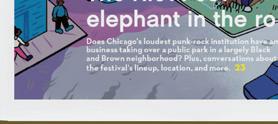 —MAYA DUKMASOVA
—MAYA DUKMASOVA
WHEN NIKE FIRST unveiled their “Just Do It” motto, a friend said he wanted to make knockoffs reading “Just Avoid It.” Turns out, sheltering in place is a good way to find out just how much avoidance I can handle in my life. The answer is “a lot.”


For someone who prefers social interaction in small controlled doses (there’s a reason I lived alone most of my adult life), quarantine is a perfect excuse. But it’s also, unfortunately, a time to brood. Especially about one’s health. I mean, there is a pandemic going on.




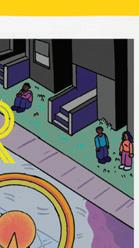
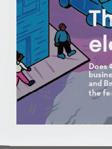

I’m not so much worried about contracting COVID, though I’m taking all the precautions and then some. It’s the other Big C that haunts me. Half your immediate family dying of various forms of cancer and having another sibling in remission will do that to you. So you’d think I’d be better about doing all those various ’grams and ’oscopies and other regular screenings. And up until a couple of years ago, I was. But I’m behind schedule, and it’s not because of lack of insurance or any other reasonable excuse.











It’s the dread of finding out I do have it, and then, like COVID, figuring out that nobody really knows what to do. Or in the words of Beckett’s tramps in Waiting for Godot: “Nothing to be done.” Because whatever miracles people experience in cancer treatment seldom landed on my family’s doorstep, and I don’t believe I would be an exception.
The shelter-in-place order was another excuse. “I shouldn’t be going to the hospital for screening now. They’re hot spots. I’m in a vulnerable age group. I shouldn’t waste valuable medical resources.” I know the people doing




























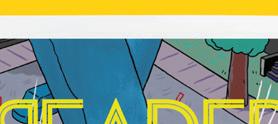
















the screenings aren’t being pulled away from ICU beds. But who rations their rationalizations when they are in a quiet panic most of the time? But not knowing is not better. Not really. The anguish around the virus and all the things we don’t know about it has given me pause. I have no right to put o tests because of my personal terrors. Information is power. Even if it’s not the answer I’d like to hear.

I feel fine. There’s no reason to think anything is wrong, other than family and genetic history. But it’s time to stop avoiding what’s out there. Or in there, as the case might be. We’ve seen what avoidance and denial does at a national level. I will do what I can to change an administration this fall. Meantime, I’m calling my doctors this week to schedule those damn appointments.



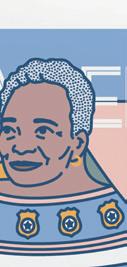

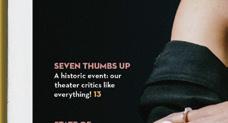







 —KERRY REID
—KERRY REID


IMAGINE YOU’VE BEEN on some form of lockdown because of medical concerns for more than a year. How much more eager would you be to get back to some semblance of normal? That’s my reality.



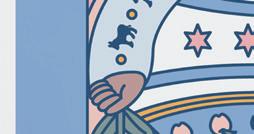
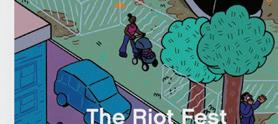
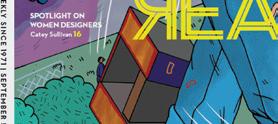

Without getting into too many details I’ll just say that cancer is a merciless bitch that too often wreaks havoc on the best people you could hope to meet in a lifetime. And for anyone su ering from an immune-system-obliterating illness, and their family and friends, one of the most striking things about pandemic quarantine is that everyone has been experiencing some level of isolation and anxiety alongside them.
After my loved one was diagnosed last spring, I scaled down my nondigital interactions to the bare minimum, and eventually halted them completely to limit my exposure to germs. Even a slight cold would mean I wouldn’t be able to see them or help care for them in person. Minor discomforts, of course, are nothing compared to what people struggling with severe illness, and their full-time caretakers, endure. And as the virus has made even more painfully apparent, it’s an incredible privilege to be able to be there, to be physically present with family members when they need us most, rather than let them su er alone.
I’m a million percent ready to enjoy oncebenign activities like dining and traveling and going to concerts, especially going to concerts, without fear of illness. I’m even more ready to no longer feel like I’m living in some state of suspended reality. But until infection rates go down and there is a vaccine, it’s better to wait out a pandemic in boredom and loneliness than in sickness. Knowing the kindness and respect people showed my family by keeping physically distant for so long makes it feel even more crucial to return the favor. I know how precious life is. I know how life can turn on a dime.
LUDWIG
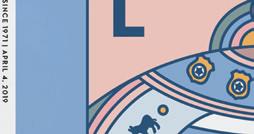


Astone’s throw from the kitsch and luxe of the Magnificent Mile, in a north-facing window on Ontario, the Hindu god Ganesh merges with the figure of a child impaled through the frontal lobe with a martial pole. Beyond them, a tapestry hangs, where the silhouette of a lynched woman forms a dark blot against a wall of flames, rioters running beneath her feet. To the right, a shirtless boy with tattoos and scraped knees sits astride a bison with a child in his arms and a dusty American flag slung over one shoulder, while a few yards away fringed Vodou flags beaded by Haitian weavers glitter boldly on the wall. As you enter, you hear the faint strains of the national anthem and slip into a darkened chamber where a watercolor image of Colin Kaepernick takes a knee every two minutes. Upstairs, a mosque is intricately rendered in bullets, gun parts, and a repurposed cluster bomb, placed across from a menorah made of much the same. Flags, maps, guns, and currency are everywhere—upside down, right
side up, dismantled, defaced, torn apart, woven together, and assembled, erupting in a fountain from the frame of a bicycle. You might almost forget that you’re standing in an architectural marvel: a city of roadblocks, choked o from its parks and waters, where just weeks ago bridges were raised to hem protesters into the tight island of its financial district. Or not.
“This We Believe,” which opened February 4 before shuttering for quarantine a little more than a month later, is 21c Chicago’s blistering inaugural salvo, marking the arrival of our own museum hotel with more than a little shock and awe. It is a stunning vision that could not be more contemporary with the storm this country is weathering, a social uprising pressure-cooked in a pandemic. Dispel any notion of hotel art as a bit of soothing color for the bleary-eyed traveler en route from airport to minibar. Free and open to the public 24 hours a day, 21c Museum Hotel’s galleries have a mission that includes as much provocation as it intends service as a commu-
nity cultural center. “The art is not decorative,” says chief curator Alice Gray Stites. “Art has a very strong role to play in nurturing a sense of community, healing people, and starting conversations that can shape that community—and by extension our culture. We want everyone who walks through the door to feel welcome, inspired, challenged, and represented.”
Originating in Louisville in 2006, 21c Museum Hotel was founded by art collectors Laura Lee Brown and Steve Wilson. Inspired by how the Guggenheim Museum Bilbao had transformed a derelict port in Spain into a global destination for art, the pair was determined to similarly revitalize Louisville, where a once-vibrant city center had been abandoned and fallen into disuse by flight into the suburbs. Yet reluctant to rely on taxes and donations or charge visitors for admission, they turned to a study of Louisville’s other needs. The answer? Hotel rooms. 21c Museum Hotel thus combines the presentation of contemporary art with an ethos of inclusion and the development of commerce to fund the enterprise, a radical vision that has since taken root and flourished beyond Kentucky as investors and developers across America have sought to sustainably bring art to their cities, opening a second location in Cincinnati in 2012 and rapidly expanding to Bentonville, Durham, Kansas City, Lexington, Nashville, and
Oklahoma City. 21c Chicago is the ninth location in what they consider to be a single multi-venue museum.

“When we open a new location, planning the inaugural exhibition averages about two years, including renovations and the design process,” says Stites. Aiming to reflect events in the world, other exhibitions have addressed themes such as labor (“Labor and Materials,” 2016-17 in Oklahoma City) and the refugee crisis (“Refuge,” 2018 in Kansas City, currently installed at 21c Bentonville). “Our focus turned to Chicago in 2018, around the midterm elections. The level of rancor, divisiveness, and polarization—not only in this country but around the world—was becoming evident. A lot of artists were addressing issues of allegiance, of people clinging to certain beliefs and denying the rights of others. The moment that we’re living in right now reflects the bubbling to the surface of our long-embedded historical challenges. ‘This We Believe’ has works that look backwards and forwards and creates a platform to unpack the question, ‘How did we get here?’ That was the original curatorial intent, though [we are now] at a vantage point far ahead of where we were.”
“Contemporary artists are visionary witnesses,” says Stites. “Their work reflects not only what is going on in the immediate present but often anticipates what is coming. That’s why at 21c we believe art can shape the future. At this moment of public health and crisis of justice, we should be looking to artists to provide the road map.” As one striking example, Stites cites American artist Kara Walker’s 2008 A Warm Summer Evening in 1863. “It’s a textile of a girl looking like she’s been lynched, over an image from Harper’s Pictorial History of the Civil War that shows a draft riot in New York City. The draft riot was not simply because white men in New York didn’t want to fight for emancipation, but also because they feared emancipation would drive them out of their jobs. We’re still dealing with what wasn’t dealt with historically.”
Another piece that observes our moment with astonishing clarity is National Anthem, an animation by Kota Ezawa that’s based on footage of athletes protesting police brutality that debuted at the Whitney Biennial in 2019. Watercolor images of linked arms and kneeling men softly flicker, logos and faces recognizable yet abstracted as the anthem plays with requiem-like solemnity. No voices are heard until the fans’ distant cheers meet the players’ piercing gazes, marking the tension of this moment of stillness. “I never felt the connection to patriotism . . . I never knew what flag I should wave,”
Chicago’s 21c Museum Hotel reopens with “This We Believe.”


7/ 15 12/2020, 21c Museum Hotel Chicago, 55 E. Ontario, 21cmuseumhotels.com. F
tism . . . I never knew what flag I should wave,” Ezawa, an Oakland-based naturalized American citizen of Japanese and German descent, said. “These national anthem protests somehow touched something in me, where I all of a sudden felt very connected to the US and to what these players were doing . . . I perceived it as an unusual act of patriotism. If you stage a protest on such a large platform, in front of millions of people, it can only because you somehow care about the place or the country that you are supposed to represent.”
More chilling is a 2018 sculpture by New York-based Chilean artist Sebastian Errazuriz. Made of 3D-printed plastic painted to look like alabaster, The Police State features figures of the present leaders of Russia, China, and the U.S., arranged on a platform not unlike the Lincoln Memorial. With flowing fabric draped over their suits and ties like fraternity pledges playing at tableau vivant, Xi Jinping sits in the place of honor, flanked by Putin and Trump, who are missing their forearms like so many purloined Venuses. “The U.S. and Russia will be handicapped . . . because China, having gathered the most data through machine learning, will have the greatest amount of A.I. and thus the most global power,” notes the wall label. “We’re creating a new mythology for the end of human times,” Errazuriz says on his website. “In times of crisis, mass unemployment, and riots, we will have to have a police state that is stronger at enforcing the will of those in power, and unfortunately that means that we will live in a society that will be willing to sacrifice a lot of their freedoms and liberties in order to have the illusion of security.”
In addition to artworks that witness and critique the past and present, several pieces in “This We Believe” present a vision of a potentially hybrid and pluralistic future. Two that Stites describes as especially optimistic are the

sculptures Umbilical Progenitor (2018) by Zak Ové and Moisa: Sospensione Mosaica (2009) by Maimouna Gueressi. Looming at just slightly superhuman scale (86 inches and 90 inches high, respectively), the two figures—one a barefoot space traveller in an illuminated Mende ritualistic helmet mask, the other a whitehorned woman levitating inches above the ground—combine religious and secular symbols, as well as masculine and feminine features, to create futuristic shamans tethered to human history, culture, and spiritual practices. “They show how one can have a multiplicity of beliefs without pledging allegiance to only one at the tremendous expense of others,” says Stites.
“They represent the need for a pluralistic future where one can have conflicting ideologies and identities existing simultaneously in one person’s being,” adds 21c Chicago museum manager Adia Sykes.

“If we are going to start healing, it’s our duty to get more comfortable with being more uncomfortable,” says Stites. “Police brutality and the legacy of racism that is so corrosive and painful have been di cult, challenging, uncomfortable topics for people to engage around. James Baldwin has said, ‘Not everything that can be faced can be changed, but nothing can be changed until it is faced.’ Until we look honestly at these issues and their ramifications—legally, socially, and culturally—until we look directly and squarely at ourselves in this moment, we can’t look forward to a better day. Art can allow us to do that.”
Sykes notes, “‘This We Believe’ is an empty container for you to fill. What is ‘this?’ Who is this ‘we?’ The intentionality behind that vagueness is really inspired. It leaves a lot of space for a viewer to come in and have their beliefs challenged. That’s the beauty of this openness.” v
“There was so much rich content there, in video and other materials, to sit down and scope out a way to put it online, to take the curriculum pieces we had for schools and make them available for download, and to just make it as interactive and engaging as possible in the spirit of the exhibit that we’d put together,” Cranston says.
The exhibit includes more than 30 writers from various immigrant backgrounds. In previously recorded content, the writers talk about their own experiences and answer questions about identity such as “Have you ever felt like an outsider?”
Misa Sugiura is one of those featured writers interviewed for the exhibit. She was born and raised near Chicago to parents from Japan, and is the author of two books: It’s Not Like It’s a Secret and This Time Will Be Di erent
“I really loved the questions—that got me excited about the whole project,” Sugiura says, “this focus on what it means to be an American writer.”
Sugiura says the exhibit counteracts previous notions about whose voices get to be identified and seen as American.
“So many of these issues have come to the forefront in a way that they haven’t before,” Sugiura says. “Now is a great time to take advantage of mainstream America’s rising awareness of who we include and who we honor, who we believe to be worthwhile in our society, and who deserves a voice.”
in and [attendees] get their book signed afterwards, there’s that interaction with the writer that’s very personal and intimate,” Cranston says. “And that’s something that we’re not able to provide right now.”
For in-person author discussions, the museum partners with local bookstore Seminary Co-op to sell books. Now, it’s di cult to track resulting sales, but Cranston encourages book lovers to still support those authors and stores.
“When [readers buy books] from a local bookstore, they’re supporting an institution that usually tries very hard to connect to their community and also may provide forums and opportunities for writers that wouldn’t get them at a national scale,” Cranston says.
And to help museums, Cranston says consider buying memberships.
“We need it; we’ve definitely taken a hit from revenue,” Cranston says. “Because of COVID, we didn’t have our normal annual spring fundraiser. It’s been tough on everybody.”
The American Writers Museum reopened last week for a limited number of visitors with modified safety precautions, but will continue to expand its online and interactive programming to include resources that schools can use next school year, including virtual field trips and guided tours. It will also convert its “American Voices” timeline exhibit into an online format for the fall.
By ARIONNE NETTLESWhen you fi rst walk into the American Writers Museum, you walk right into a timeline of American writers that spans more than 400 years. You take that long hallway to reach an open space often used for talks with authors debuting new books. Throughout each and every space, there’s something to learn—with great quotes from great writers like Octavia Butler lining the walls.
But since March, walking through those rooms hasn’t been an option. The museum, like others across the U.S., closed its doors as COVID-19 has changed our relationship with physical spaces. The museum, however, was quick to change with it, implementing new versions of exhibits and adding virtual
events.
“We had been hoping to get to a point where we could put more of our content online,” says Carey Cranston, the American Writers Museum’s president, “when it became apparent that we were going to need to shut down. What I wanted to be able to do was to redirect our sta ’s energies into projects that would keep people occupied.”
The museum’s “My America: Immigrant and Refugee Writers Today” exhibit, which explores the infl uence of modern immigrant and refugee writing, was created in 2019 to be an in-person, interactive experience. Because of how it was designed, it became the fi rst exhibit that museum sta converted to online.
In June, the museum rolled out a second virtual experience for another exhibit, “Frederick Douglass: Agitator.” In addition to transforming content from the original exhibit, in its online form, a descendant of Douglass joins writers, scholars, and activists in reading his 1845 memoir, Narrative of the Life of Frederick Douglass, an American Slave
The museum’s reach and coverage is national—it opened in 2017 and is the first museum of its kind in the country.

The museum’s event calendar may have remained booked, but that national focus during COVID-19 brings additional challenges: the unknown safety of travel and canceled book tours. Although a virtual book talk gives the opportunity to introduce new works, it is still a very di erent experience for audiences—and book sales.
“When you bring in 100 people and have somebody in your space, the author comes
“We’re building those platforms right now because we recognize that even if schools are open, no school is going to put kids on a bus and bring them down to a museum until there’s a vaccine,” Cranston says. “So this could be a long haul through into next year.” v
This story was produced in partnership with the Pulitzer Center. For more stories about the effect of COVID-19 on museums, please visit the Prairie State Museums Project at PrairieStateMuseumsProject.org.
@ArionneNettles
“A Nation of Writers” exhibit at American Writers Museum COURTESY AMERICAN WRITERS MUSEUM
moment that’s stuck with me.
How did your perception of racism change as you got older?
I realized my culture was hidden and my color was fetishized. In order for me to succeed, I had to coat my tongue in the jargon of the oppressor. This manifests three ways: physical, how we dress to assimilate; mental, how we internalize the ideas and viewpoints of white supremacy; and spiritual—there are some Black people that have let that cloak cover every bit of them. The unfortunate truth is that we all involuntarily follow white supremacy, and we all need to take active action. I like to tell people that all lives do matter, but don’t forget Black is included in that, too.
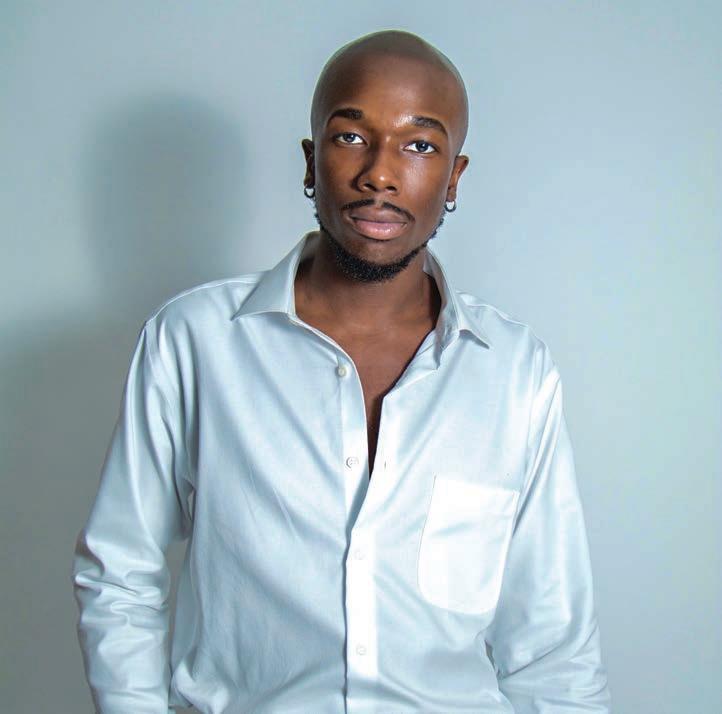
Was there a specific incident that led you to virtual organizing?
I saw people outside protesting—many of them people who look like me. But, the reality for white protesters is that activism ends when they go home. Meanwhile, I’m in my house seeing headlines about lynchings. I wanted anyone, even one person, to know that I plan on spending every second of my life with purpose. So I took to the Internet, a tool for continued growth and mobilizing.
For Black people, our breath is activism, and breath is life. I want every second guaranteed for all Black people—trans, nonbinary, genderfluid, and intersex included.
want to give the world a face for softness in a Black man—a smile, a touch on the heart, and familiarity.
What are your goals for the movement?
In the abstract, I want to humanize all Black people. I want to push the seeds of love into the hearts of anyone who sees these videos and build a community dedicated to change. I want to collaborate with leaders so every second is guaranteed for all Black people, regardless of how hate stems even within our community.
More concretely, I plan on spreading key terms, definitions, and ideas related to BLM through the #iPlan2Live cartoon series. I am willing to educate. I’d also like to connect with a streaming service that takes information sharing seriously. Most people are uninformed, and information is power, information is love, and that love will eventually lead to peace for my people.
Tell me about how you came up with that idea.
By KT HAWBAKERLike all great social justice movements, Chicagoan Kale Williams’s revolution involves cats—namely, Gingy, a sweet lil fur baby with quite the social media following. Williams and Gingy are at the helm of #iPlan2Live, a two-veined project that involves animation and personal testimony via social media platforms. As of writing this article, the hashtag is trending on TikTok with over 150K views and is still gaining traction.
Our conversation has been edited for length and clarity.
KT Hawbaker: Let’s talk about the roots of
your work. When did you become aware of racism as a concept?
Kale Williams: In high school, my “best friends” outed me as queer; I had kids come up to me saying their parents were known KKK members and that they “kill faggot n-words.”
In another situation, a group of white kids and one Black girl went up to my grandfather’s car and screamed, “Don’t bring his faggot n-word ass back here!” As we left and drove down the highway, I took my shoes o and stuck my feet in the window. I remember that Katy Perry’s “Teenage Dream” was on the radio—It was a
Something that really moved me about your initial video is how you tell the viewer that you are now friends. It’s a very tender moment. What do you think the role of softness is when it comes to movements like #BLM and #iPlan2Live?
Let me specify: BLM is a history. #iPlan2Live is a movement within that history.
It’s important to not mistake softness for weakness. My philosophy in life is to exude as much love and light into the world as possible. Obviously, I am human and have made mistakes but I do my best. I hope every person who sees my video considers us friends and supports all identities within blackness. I
The #iPlan2Live cartoon series features cute cats speaking about important concepts regarding marginalized identities. I chose cats because my cat, Gingy, is super cute and has 19K followers on TikTok. A total influencer! And, my segment of followers tend to be cat-loving folks for social change. The end result is a diverse cast of cats voiced by Maliyah Arnold, Brando Crawford, Grace Ahn, Adrian Stein, Meiling Jin, and Lizbeth De Los Reyes. I want to take this series to Jupiter and back, because I know it’s important to spread information. It keeps us adaptable. Ideally, it would wind up as a Netflix or Hulu show—whoever can see the power and potential in my work and me.
In the meantime, how can folks get involved?
They can use the hashtag on their social media channels to join the conversation and follow the cartoon series—we’re releasing one episode a week.
In order to sustain this, we also need animators, accountant, and investors for the cartoon. We also welcome actors, local and global celebrities—really, anyone else who wants to help. The first steps: Follow us at @IPlan2Live on Instagram and @GingyTheConcernedKitty on TikTok. Continue to demand justice for all Black people. v
Kale Williams initiates an online movement celebrating Black so ness and purpose.Kale Williams, creator of the #iPlan2Live movement COURTESY KALE WILLIAMS
Steep Theatre loses its venue, but not its vision.
By KERRY REIDSince its founding in 2001, Steep Theatre has spent most of its institutional life in the shadow of the Red Line—from its first long-term venue by the Sheridan stop (where the honky-tonk music from the bar next door would bleed through the theater’s walls on the weekends) to its current home nestled next to the Berwyn station.
But last month, the company announced that they were losing the space they’ve occupied since 2008; the owner has sold the building housing both Steep’s flexible 60-seat black-box theater and the adjoining cozy Boxcar bar and cabaret space that they opened in 2018.
The news came in the midst of a flurry of announcements about other Chicago theaters— namely Mercury and iO—closing their doors permanently. But those were for-profit enterprises and Steep, as a nonprofit, does have some cushion from foundation grants not available to their commercial counterparts.
Last year, Steep, along with Porchlight Music Theatre and Albany Park Theater Project, received an inaugural “stepping stone” grant from Rick Bayless’s Bayless Foundation, giving them each $150,000, spread over three years. The grant enabled Steep to make the leap to Actors’ Equity union contracts for their productions of Lucy Kirkwood’s Mosquitoes in October of 2019 and for their world premiere of Isaac Gomez’s The Leopard Play, or Sad Songs for Lost Boys this past January. The company’s operating budget for the 2019-20 season, pre-COVID, was just under $500,000.

For Steep’s artistic director Peter Moore and executive director Kate Piatt-Eckert, the announcement was not completely unexpected. “We’ve known for a little while that it could be sold at some point, but didn’t find out until it had,” Piatt-Eckert says. For now, both she and Moore are choosing to view the search for a new home in the midst of a citywide performing arts shutdown as a way to reimagine what their theater can be in a post-COVID world, while taking with them the best of what they’ve learned over the past two decades.
“If it were any other year, any other moment when this happened, we would have been
scrambling to find a home for already-scheduled shows and been really in a crunch,” says Piatt-Eckert. “This gave us the breathing room to explore our options but also to be really thoughtful about next steps.” Though they haven’t zeroed in on a new venue yet, the company hopes to stay in the Edgewater neighborhood.
Even before the news of the building’s sale hit (and before the stay-at-home order in March shut down all theaters and clubs), Steep was thinking about how to reconfigure the space to address the needs of both social distancing and productions with larger casts. Piatt-Eckert says, “Something we were looking at for reopening, before the building sold, was figuring out how to make it work with flexible seating and figure out how to reline up audiences in di erent places.”
But they quickly realized that even if they could create distance for their patrons, the close quarters for actors and crew would be a problem. That’s one of the things they hope to address in their new space.
Says Moore, “One of the things that we were toying with, before the building sold, was our dressing rooms. With large ensemble pieces— we had a show with ten people coming down the pike—the idea of doing a ten-person show onstage in that space was daunting enough. But the idea of cramming ten people into a dressing room is impossible.” He adds, “The booth for our stage managers is impossibly small to begin with. Having a [production] shop in the back of our new space is a priority.”
Creating more open space for patrons is also part of Moore’s dream list, spurred by Steep’s experiences with the Boxcar, which not only gave audiences a place to gather before and after plays, but also presented its own programming, curated by Thomas Dixon, which encompassed music, spoken word, comedy, and community discussions. Moore says he would love to find a way “to incorporate those performances in the front lobby. And have a big open lobby with big windows and have the art right out there in front. Maybe have windows open to invite people into the space and welcome them immediately into the Steep world. I kind of feel like that vision for a lobby—open and inviting, arts incorporated into the function—is again a kind of metaphor for how I’d like the organization to come back.”
Steep, in coordination with several other theaters in Edgewater, including Jackalope, Raven, Rivendell, Story Theatre, and About Face, literally opened its lobby last month to collect donations of food, medical supplies, phone chargers, and other necessities in support of Black Lives Matter protesters and organizations such as
Brave Space Alliance and Chicago Freedom School.
Says Piatt-Eckert, “I think in this time when we’re not producing, theaters have the opportunity to take a hard look at themselves and how they work internally and externally to play a bigger role in anti-racist work.” That reflection, she notes, includes looking at “how are our artistic teams assembled, and how are our leadership teams structured, and how are power dynamics structured.”
That soul-searching might also involve looking at some of the most cherished precepts of theater, especially the Chicago storefront model where gritting your teeth and getting through has long been held up as a virtue. “Now there are di erent kinds of safety that we talk about and one of them that we hadn’t talked much about before COVID was the physical wellness, the not-getting-sick part of performing,” says Piatt-Eckert. “I’ve been involved in theater for almost 30 years and I don’t think I’ve ever worked on a show where there wasn’t some cold going around during tech week,” adding, “We really should be taking our health more seriously as we look at the production models. I don’t have answers to that yet. But I think it’s something we’re all thinking about.”
Meantime, though the shows aren’t going on, Moore is still reading through scripts and thinking about what and when they can produce again. “We’ll have a better timeline in the next couple of months. We have two shows that were on hold for a little bit and I’m not sure if we’ll hop back in and open with those shows.” (One of the shows Steep had to cancel this spring was Ironbound by Polish immigrant and onetime Chicago resident Martyna Majok, who won the 2018 Pulitzer Prize for her play Cost of Living.)
Piatt-Eckert notes that Steep and many of their theatrical peers aren’t necessarily eager to open until the COVID curve flattens out quite a
bit more.
“Something I’ve heard a number of di erent theaters say is that they can only afford to reopen once. So theaters are holding onto the money they need as much as they can to be able to do another show. Mounting a show is really expensive and if you don’t have the revenue from the last show to help fund the current show, you’re essentially starting from scratch. And theaters are sort of hanging onto the money they need to be able to do that, but they can only a ord to do it once. So if that show has to close because somebody got sick, or because we go back down into stage three or whatever that is, it’s likely we won’t have the funds to do it again.”
That means, too, that funders need to be patient and flexible with all nonprofit theaters— and not just the ones who are on the hunt for a new home. “It seems sort of counterintuitive to fund theaters to not produce plays, but if there is funding to give theaters to function in the meantime, that makes it possible for theaters to reopen without having to recreate new sta and recreate new theaters and do all of the things that will be necessary if theaters start to close,” says Piatt-Eckert. “For folks out there with piles of money, funding theaters and other arts organizations to NOT produce right now is actually hugely beneficial as we look to what reopening looks like.”
But whenever and wherever Steep opens their doors next, Moore is determined that it will be a place of celebration and community. “The experiences we take away from [the Berwyn space], the thing about that space is that it was the most alive and vital when those rooms are activated and used by the entire community. Looking back, those are really the exciting nights in that space.” v
@kerryreidAt the start of COVID-19 lockdowns, thousands of Chicago theater artists lost immediate income. In the weeks to come, even more lost future gigs. And now, with no reopening date in sight, many of those artists are still without work. Before the state went into lockdown on March 22, the organizers behind the Chicago Artists Relief Fund were already set to help their community.
“Following in the footsteps of the Seattle Artist Relief Fund Amid COVID-19 founded by Ijeoma Oluo [author of So You Want to Talk About Race ], Jessica Kadish-Hernández put out a call to the Chicago art world and folks from different walks and administrative talents joined the team,” co-organizer Claire Stone, the company manager for First Floor Theater, said via e-mail. “We all have di erent disciplines, some of us with day jobs outside of the arts entirely, and we all care very deeply about our creative community.”
Kadish-Hernández, a director and actor, posted a Facebook status about creating a relief fund in Chicago on March 13. By that afternoon there was a group discussion and two days later the GoFundMe went live.
“When I saw Jess’s post on Facebook sharing the Seattle Fund and saying ‘Who is going to do this with me?!’ I immediately replied,
‘I’m in,’” co-organizer Ellenor Riley-Condit (theatermaker and one of the creators of the kid-oriented Unspookable podcast) said via e-mail. “Everyone on the administrative team came together [similarly.]”
The relief fund is providing microgrants up to $300 to Chicago-area artists who lost work due to COVID-19. Priority is given to artists who are BIPOC, trans+, nonbinary, queer, or disabled, though the administrators want to fund as many artists as possible.
As of July 6, the GoFundMe raised just over $96,000 of their $150,000 goal. That’s enough to fund 313 artists the full amount. The current goal would allow them to fund 500 artists in full.
“We’ve also all signed a confidentiality agreement that we take extremely seriously,” Kadish-Hernández said via e-mail. “Disclosing need is a vulnerable act, particularly when you’re disclosing to fellow artists who you may know from other contexts. From day one, we made sure we were clear about putting privacy and confidentiality standards in writing.”
When originally interviewed early on in lockdown, the three organizers were blown away by how quickly Chicago came together to support the fundraising e orts. Donations

were coming in more quickly than anticipated and fellow artists were quick to step in.
“We had local musicians, led by Fiona McMahon, plan a Quarantine Concert where 20 di erent people streamed sets from their homes on Facebook Live,” Riley-Condit said. “We had a reading of Steel Magnolias , planned by Chicago theater company the New Colony, that took place over Zoom. We’ve had tons of artists and press shout us out and that has helped donations continue to come in.”
“Angel Idowu at WTTW covered us in our first week, which was huge for us, and social media word-of-mouth spread worldwide within days of launching—by the end of that first week we’d raised $31,000,” Kadish-Hernández added. “(Donations have slowed down a bit since then, but we’re getting ready for another big push.) We’re seeing support from current Chicagoans and former Chicagoans and people from all over the world who happen to know and love Chicago.”
Like the Seattle artist fund and other crowdsourced funds, the goal for the Chicago Artists Relief Fund will continue to rise. As each goal is met, the administrators will raise the bar a little higher. The original goal was $50,000 and now it is $150,000.
“We meet on Zoom every day to discuss and delegate and check in with each other,” Stone said in an e-mail. “Administratively this project has a lot of challenges, especially navigating GoFundMe and PayPal at a time when both are functionally overloaded. Emotionally, we’re connecting the dots day by day. But we have folks on the team who are parents calling in between teaching their kids and making dinner, we have folks with
telecommute day jobs—I work ‘at’ a hospital!—some of us are full-time artists biding time. I think we’re all discovering what it is that individually we need to get through, and the growing pains are real.”
With the recent news that Broadway won’t reopen until 2021, it’s possible Chicago theater won’t be live again until the new year. Bearing that in mind is difficult for artists who thrive on live performance. And yet, the team behind the fund is focused on the positive.
“We have to be optimistic at this point: Chicago theater will come out of this stronger, invigorated, inspired, brought emotionally closer by time apart,” Stone said. “It will take time to recover, and we’ll have to grow and change with it. There will be some permanent scarring. Maybe the scene will look a lot different, and we’ll be ready for whatever forms it takes. But we’re looking forward to a family reunion like no other, sharing space and sharing work, and we’ll hold each other up until then as best as we can.”
Chicago theater, when it does come back, could have a much di erent landscape. Mercury Theater and iO Theater have already announced they are closing permanently, and there may be more closures down the line. But there is hope in the changes that Chicago theaters can become a more equitable and workable environment.
“There’s been a lot of wonderful equity work done across arts industries in the last few years,” Riley-Condit said. “People are recognizing the need to educate themselves and their organizations, and increase their support of work by artists of color, queer and trans+ artists, disabled artists, and so many more. Chicago theater is no exception there; from our largest institutions to our smallest, many have committed to these equity e orts. My biggest hope coming out of this, and even during it, is that the Chicago theater community puts their money where their mouth is, so to speak. All of the equity e orts mean little if we don’t act on them when the people we claim to want to support are in need.” v
For more information on the fund or to donate go to gofundme.com/f/ chicago-artists-relief-fund.
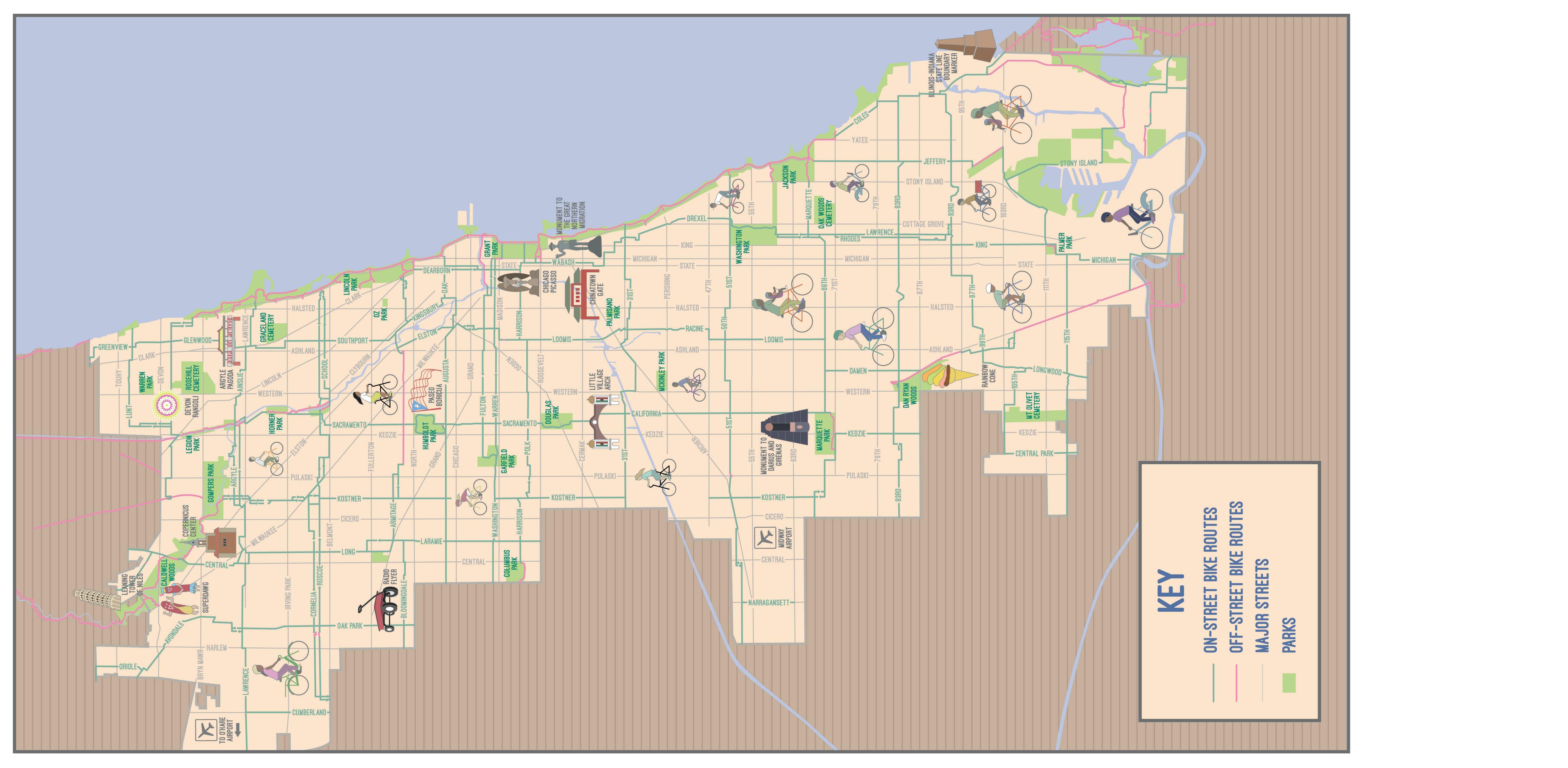


The need for a good Chicago bike map has never been greater.
As I write this, our city is in Phase Four reopening after being devastated by COVID19, and workplaces have opened their doors again. CTA ridership fell by 80 percent during the pandemic, and many Chicagoans are still avoiding transit, so if we don’t provide safe alternatives to cars for socially distanced trips, we’re sure to see a serious spike in driving, congestion, pollution, and tra c deaths.
For months now, peer cities across the country and around the world have been taking action to facilitate safe, socially distanced walking and biking and prevent future carmageddon by repurposing parking and travel lanes to widen sidewalks and create emergency bus and bike lanes. There’s also a nationwide movement to create “Slow Streets,” residential roadways where through traffic is banned so people can safely walk, roll, jog, and bike in the street, creating corridors for transportation and recreation. That’s crucial, because the United States is currently seeing a major biking boom.
Chicago was late to the party, having done almost nothing to make more room for walking, transit, and cycling during the fi rst few months of the crisis. Meanwhile, Mayor Lori Lightfoot closed the Lakefront Trail and the 606 for about three months, eliminating about 21.5 miles of car-free commuting corridors.
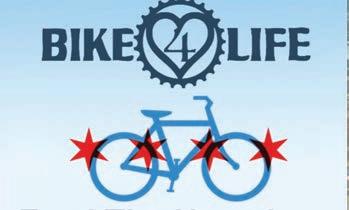
Thankfully those key corridors have reopened with restrictions, and the city has been gradually rolling out several miles of Slow Streets in neighborhoods like South Shore, Kenwood-Oakland, Bucktown, Logan Square, and Ravenswood. But we’re still way behind other U.S. cities. For example, Oakland, California, with a fraction of the population of Chicago, is doing 74 miles of Slow Streets, many times more than our city.
But rather than curse the darkness, we at the Reader decided to light a candle by speeding up the release of the citywide version of our Mellow Chicago Bike Map, which originally covered the area bounded by 95th,
Cicero, Devon, and Lake Michigan. This new version stretches from Morgan Park to Rogers Park, Edison Park to Hegewisch, o ering low-stress alternative routes, mostly on side streets.
They’re ideal for people from all over town who want to try biking as a socially distanced way to get around that’s also healthy, a ordable, good for the environment, and super fun. But even seasoned cyclists will appreciate these quiet, serene roadways where shade o ers relief from the summer heat.

View the Citywide, Simplified Mellow Chicago Bike Map online at tinyurl.com/ CitywideSimplified.
If you’re in a hurry and need more direct routes, the city of Chicago’s o cial bike map is useful for fi nding marked bikeways on main streets. To avoid clutter on this larger edition of the map, it doesn’t include the points of interest and restaurant and bar recommendations from the original central-city version, but you can still view those at tinyurl.com/ MellowChicagoMap.
While I think these routes are generally better for bicyclists, you still should be careful anytime you ride in the city. Feel free to drop me a line with any suggestions for improvements or additions at jgreenfield[at] streetsblog.org.

Some notes:
—I’ve tried to create a grid of low-stress north-south and east-west routes within the city of Chicago, spaced roughly a mile apart.
—To keep the map from getting too cluttered, main-street bikeways, including most diagonal streets, generally aren’t shown— check out the city’s map for these.
—Some routes include a short stretch of sidewalk, or a block where you might have to ride the wrong way on a one-way street. To follow the letter of the law, please dismount and walk your bike at these locations.
Thank you to everyone who provided feedback on drafts of this map or helped out in other ways. v

Considered a quintessential work of the Berlin School movement, the subtly provocative debut feature (2002) of German writer-director Ulrich Köhler depicts several days in the life of a young soldier, Paul (Lennie Burmeister, in a phenomenal performance), a er he goes AWOL from the army to hide out at his parents’ countryside bungalow. There he finds that his older brother, Max (Devid Striesow), and his Danish girlfriend, Lene (Trine Dyrholm), have also come to stay. Paul develops an obsession with Lene, an attractive actress who’s similarly intrigued by the peculiar wastrel. He then begins acting more and more erratically, which gives this stony comedy its most wryly humorous moments; as a result, his alienation from those around him and society at large becomes more pronounced. Likewise, things become more ambiguous as the film progresses, to us and even to the characters themselves. It’s pure disaffection—with country, home, and self—writ large but still veiled; is it madness or clarity that Paul is experiencing? It’s an auspicious debut, one that should inspire viewers to seek out Köhler’s subsequent features (Sleeping Sickness, In My Room, et al.). In German, Danish, and English with subtitles. —KATHLEEN SACHS 85 min. Through 7/16, Facets Virtual Cinema
Nasim Pedrad stars as a lost woman looking for a job and a relationship in this L.P.-directed comedy. The plot has promise, but a lot of flopped jokes and cringy (in a bad way) moments prove the film to be desperate indeed. The leading lady and her two friends embark on a journey to Cancún, on a dummy mission to delete a message she sent to her boyfriend during an emotional breakdown. What could have been a light-hearted story about the things people will do to keep love turned into a series of odd conversations between friends that don’t transfer to real life. On the main character’s dates and in other challenging scenarios throughout the film, many of her stumbles that were supposed to be jokes don’t land. In fact, there weren’t many laughs to be had at all, a result of possibly trying too hard. Any funny film should also be relatable and have true stakes—this Netflix release failed to do either. —JANAYA GREENE 76 min. Streaming on Netflix
For They Know Not What They Do asks you for your forgiveness, but should you give it? Following the Supreme Court’s decision to legalize marriage equality and the religious right’s rapid and relentless backlash, Daniel G. Karslake’s follow-up to For the Bible Tells Me So continues an exploration of the relationship among
sexuality, identity, and scripture. The focus this time is aimed at four faith-based families with children in the LGBTQ community. The plea for forgiveness comes when viewers are prompted to look beyond some of the grave mistakes made by family and congregation members to see the lessons they’ve learned. While the growth is heartwarming, it’s also heartwrenching to consider the avoidable atrocities faced by some of the subjects and raises the question: Is trotting out traumas, some as severe as death, to teach lessons worth it? For They Know Not What They Do believes it is. Will you? —BECCA JAMES 92 min. Gene Siskel Film Center From Your Sofa
At first French writer-director Stéphane Demoustier’s gripping courtroom drama seems almost too straightforward. A remake of Argentinian director Gonzalo Tobal’s 2018 film The Accused, it centers on the trial of 18-year-old Lise (Melissa Guers), who’s charged with violently stabbing her best friend to death two years prior. Lise’s parents (Roschdy Zem and Chiara Mastroianni) are shocked at what they learn about their daughter during the trial; such revelations are meant to blemish Lise’s character, as they expose a seemingly virtuous young woman who gets into salacious spats with her friends and has sex with boys and girls. Though the film is noticeably devoid of any glaring twists, a less obvious one is that the very behaviors that might normally cast doubt on Lise are here meant to challenge prejudices concerning young women, which routinely vilify them for acting in ways contrary to expectation. The ambiguous ending may be unsatisfying for viewers anticipating a routine potboiler, but what’s really on trial is more interesting. In French with subtitles.

—KATHLEEN SACHS 95 min. Through 9/14, Gene Siskel Film Center From Your Sofa
Real life American hero Congressman John Lewis is both honored and humanized by the documentary John Lewis: Good Trouble The film draws a direct line between the past and present, cutting between Lewis’s accomplishments and newly-minted politicians such as Stacey Abrams and members of “The Squad,” highlighting the humbling task of stepping into the giant shoes of a legend. Covering well-worn territory such as the Montgomery Bus Boycott, viewers are treated to stunning, rarely seen Civil Rights footage that was even new to Lewis himself. One particularly gripping scene shows a terrifyingly realistic nonviolence training session role-play in preparation for sit-ins at segregated diners—that would turn violent. Starting his life as a young man picking cotton, then ascending to the ranks of Congress, the film reveals a man who is a ruthless and cunning campaign opponent, a progressive
and effective legislator, a hilarious, kindhearted fan of chickens and dancing, and a joyfully stoic man who possesses steely bravery in the face of white supremacists. Lewis says, “I lost my sense of fear. When you lose your sense of fear, you are free.” For a country in the grips of terrible trouble, John Lewis: Good Trouble is the perfect injection of courage this Independence Day. —SHERI FLANDERS 96 min. Music Box Theatre, Music Box Theatre Virtual Cinema
With this adaptation of Greg Rucka and Leandro Fernandez’s graphic novel The Old Guard (which was scripted by Rucka), director Gina PrinceBythewood (Love & Basketball, Beyond the Lights) delivers a big-budget comic book movie that’s both entertaining and affecting. The perennially badass Charlize Theron stars as Andromache of Scythia, aka Andy, the leader of a clandestine group of immortal warriors who come from different points in history. The film’s plot centers on the group acquiring a new member, Nile (KiKi Layne), and subsequently fighting back against a conniving pharmaceutical CEO who seeks to harvest their DNA. This succeeds where Prince-Bythewood has always excelled: focusing on strong women, especially women of color, like herself—Nile, a young, Black marine, is formidable, and there’s a backstory involving Vietnamese actress Veronica Ngo’s character that seems likely to spawn a sequel—and love, be it romantic—two of the male immortals (Marwan Kenzari and Luca Marinelli) are in a millennia-long relationship—or familial. There’s an indescribable affection for and among the characters in Prince-Bythewood’s films that never feels contrived, and here it imbues even an action-packed tale with very real sincerity. With Matthias Schoenaerts, Chiwetel Ejiofor,
This Sundance darling gained plenty of attention when it was bought for $22 million—far and away the biggest Sundance deal of all time. That’s a lot of hype to live up to, especially for something being billed simply as an Andy Samberg rom-com, but Palm Springs manages to live up to and even exceed it. That’s in part because of the film’s ability to seamlessly blend romance, comedy, science fiction, and heart-wrenching emotional drama. Samberg stars as Nyles, a seemingly fun-loving and carefree man who draws the attention of closed-off Sarah (Cristin Miloti) at a wedding reception in Palm Springs. What starts as a typical rom-com conceit very quickly reveals itself to be a time-loop movie that leans more toward Russian Doll than Groundhog Day, questioning the purpose of life, the many planes we might exist on, and the toll that sitting idly by instead of trying to figure it all out takes on one’s humanity. The continuing twists keep the story fresh, and the supporting cast—which includes Peter Gallagher, J.K. Simmons, and Camila Mendes—are excellent in ever-changing time-loop scenarios. At the helm, though, it’s the perfect pairing of Miloti and Samberg, who both shine while showing off the depth of their comedic and dramatic chops. —BRIANNA WELLEN R, 90 min. Streaming on Hulu on 7/10 v



















the return of
A little more than 40 years ago, Cameron filled two voids. In the late 1970s, he noticed that scarcely any prominent funk artists lived in Chicago, even though the music was still very much in fashion and had deep roots here.
At the same time, he saw a shortage of Black superheroes in pop culture. So he created a costumed alter ego, Captain Sky, and released three albums that celebrated his extraterrestrial powers with upbeat electric dance-floor funk. Since then, Cameron has drifted in and out of music, but he established a lasting legacy with those early records—in part by inspiring some of the pioneers of hip-hop.
This summer Cameron is releasing the

Chicago’s funk superhero releases his first album in 40 years—and this time his mission includes mentoring Black teenagers on the south side.
By AARON COHENfirst tracks from his first full-length album since 1980, The Whole 9, via his own Captain Sky Cre8tive Conceptz label. He’s putting it out piecemeal, and since June 5 he’s been dropping one of its nine songs every 21 days through streaming services. No physical editions are planned yet, but the full collection will be available digitally on November 27. Cameron is also launching a nonprofit to mentor young African American men. Though the cover of his 1978 debut, The Adventures of Captain Sky , depicts him flying above the city on a golden LP, with his current music and social mission he’s responding to people on the ground.
“The cape is on right now,” Cameron says from his home in Olympia Fields. “It’s just not visible. It’s not a physical cape—it is the authority that I have to bring about my vision.”
Musically, The Whole 9 connects to The Adventures of Captain Sky and the two albums that followed. Cameron’s overarching mood is as resolutely positive now as it was then. Classic funk guitars, scratchy yet precise, engage with bass and keyboard vamps while horns sneak in brief solos. Cameron, who’s about to turn 63, still prefers live instruments over samples, and he shuns Auto-Tune in favor of his natural voice. While he’s always written or cowritten the majority of his repertoire, he’s now introducing reimagined versions of other artists’ material and expanding into di erent idioms: his new tunes include a blues song
(“So So Good”).
Cameron has made a bigger change in the themes his music addresses. On his debut, he celebrated virility with “Super Sporm” (name-checked on the 1979 Sugarhill Gang smash “Rapper’s Delight”), but compared to the good-time dance tracks that dominated his early work, his new material reflects a more spiritual, inspirational outlook. He also remakes the Intruders’ 1973 R&B hookup hit, “I Wanna Know Your Name,” as the devotional “I Wanna Praise Your Name.”
“My spirituality has been deeply rooted,” Cameron says. “It wasn’t a sudden, microwave, voila moment. It’s still getting stronger. I never want to feel that it’s something I want to arrive at—there’s always something for me to learn. If I sit down with a guy who’s Catholic, a guy who’s Muslim, Buddhist, or whatever and have a conversation about the Creator, you may call him something di erent than I call him, but we’ll be able to relate.”
That positive sentiment goes back to Cameron’s youth growing up near 99th and Green Street in Washington Heights. He describes an idyllic childhood, and at age 13 he got a guitar from his father as a birthday gift. In the early 1970s, Cameron went to the Lutheran-run Luther High School South, the same school that Lonnie Rashid Lynn Jr., aka Common, would attend 15 years later. Religion was part of the curriculum, and he says that his recent lyrics reflect that education.
Predominantly white Luther was a world away from Cameron’s south-side neighborhood, but he calls the experience “all a part of my growth and development.” He says he didn’t have significant trouble because he was Black. He played rock and funk with racially diverse groups of friends, both in a student group and outside school, and listened to soul on WVON.
“Music is universal, man, it has no color,” Cameron says. “It doesn’t have a gender, really. Some of it does: You can listen to some stuff, and it’s kind of soft. And some other stu is hard. But even as men, we have some female tendencies. It’s always a mixture.”
As Cameron recalls, Chicago’s music scene had a familial camaraderie when he was getting started. After playing in the Bionic Band and South Side Movement in the mid-70s, he sang in Aura, a duo with Sheryl Sawyer (daughter of future mayor Eugene Sawyer). In early 1978, Cameron started working with industry veteran Eddie Thomas, who represented him as a solo act.
Thomas had been Curtis Mayfield’s business partner, and as an independent promoter he’d established many national contacts. Through Thomas’s intervention, within a few months Cameron had signed with Californiabased label AVI, whose roster featured disco band Le Pamplemousse, Chicago soul singer Lowrell, and Liberace. But the fantasy Cameron projected was a far di erent sort than that
of Las Vegas’s flamboyant Mr. Showbiz: the easygoing Adventures of Captain Sky blended George Clinton with DC Comics. Since Cameron’s parents paid for the studio time to make the album, he didn’t feel pressure from the label to wrap the sessions up too quickly. Keyboardist Donald Burnside, who worked on the arrangements and played on the record, says they took their time to develop a sound that kept everything loose. He also remembers Cameron devising the Captain Sky concept in his own bedroom.
“These were some of the freest sessions I’ve ever been involved in,” Burnside says. “Nobody told me anything; I played anything I wanted to play. It wasn’t like the Ohio Players, where everything was super structured. ‘Super Sporm’ just works with singing, chanting, or playing the saxophone. If I could figure out why, I’d patent it and never have to worry about anything again.”
Cameron’s debut stood out for another reason too. Billboard reported in July 1978 that AVI had used a 12-inch of the Adventures of Captain Sky track “Wonder Worm” to introduce “expanded grooves on its disco disks to aid deejays to program parts of a record visually.” By widening the groove at key moments, this modification made it easier for DJs to work a song into a mix. It also helped make Cameron’s music popular with a group of trailblazing young musicians—but not for the exact reasons he might’ve anticipated.
“All the DJ had to do was play the record one time to know which breakdown was which,” Cameron says. “The first groove could be a heavy percussion break; the next may be a bass break, or just the drums and percussion. So that record was one of the first to ever do this.”
The timing couldn’t have been better. That same 1978 issue of Billboard noted that Bronx DJs had been buying specific R&B albums to loop their rhythm breaks. Soon the result, hip-hop, became a nationwide phenomenon. On “Super Sporm” Cameron left unexpected yet fitting gaps in his vocals, creating plenty of room for multilayered percussive forays that made The Adventures of Captain Sky a sought-after part of that burgeoning genre’s source material. Whosampled.com lists cuts from his three late-70s and early-80s records as part of 45 hip-hop tracks, including such cornerstones as Afrika Bambaataa’s “Planet
Rock” and Public Enemy’s “You’re Gonna Get Yours.” He’s shouted out by name in “Rapper’s Delight” (as “my man Captain Sky”), and two of its verses refer to “Super Sporm.” In the first, the Sugarhill Gang invoke a Black superhero to mock the white concept of Superman: “He can’t satisfy you with his little worm / But I can bust you out with my super sperm.”
“I realized if my name is mentioned in the very first rap hit, then I had something to do with the coming together of the whole genre,” Cameron says. “It was an honor, and it doesn’t make me stick my chest out and say, ‘I’m the man.’ It’s very humbling. I love Chicago, but New York really embraced me on that particular record.”
Back in Chicago, Cameron had a wider vision for his 1979 follow-up, Pop Goes the Captain . Trumpeter Rodney Clark says this album’s large assemblage of horn, string, and percussion players represented the premier Chicago studio talent from a time when such

sessions were still happening in local R&B—an era that would end just a few years later. One of the guitarists, the late Danny Leake, would go on to become a crucial audio engineer, most notably for Stevie Wonder.
Cameron was becoming conspicuous nationwide in more ways than one. At well over six feet tall even in ordinary shoes, he looked even taller performing “Wonder Worm” on Soul Train in early 1979: he wore a rakishly cut white jumpsuit with matching boots and fringed cape, flamboyant sunglasses, and a huge star-shaped belt buckle, while holding the microphone in one hand and a gleaming, LP-shaped silver shield in the other. A clip of his appearance has been uploaded to YouTube, and everyone’s moves and styles still look like as much fun as they must’ve been in 1978. Cameron toured with future house-music progenitor Vince Lawrence, then a teenager, running his pyrotechnics. And his outlandish outfits were created by Dexter Griffin, who also worked with Bootsy Collins. Collaboration fueled imagination.


“Costume designer Dexter Gri n was phenomenal,” Cameron said. “I would tell him exactly what I wanted in the costume, and we never met. He had all of my specs, all of my measurements. I’d say, ‘I need something with purple,’ and he’d say, ‘How about purple and silver? Make the boots come up to the thighs.’ A few days later, he’d just make it and send it to me via FedEx.”
Cameron recorded the cheerful 1980 album Concerned Party #1 (TEC Records) with Chicagoans, but within a year or two he was living in Philadelphia. That record would be his last full-length till The Whole 9. He moved back here in 1985, but the days of fantastic costumes and large-scale instrumental arrangements were largely in the past. Cameron spent time informally advising upstart artists, but the emotional blow of his father’s death
in 1991 curtailed his involvement in the local scene. He also acknowledges another hindrance to his personal and professional lives: he calls himself “a survivor of the 1970s snowstorm, where everybody would like to play in the snow.” Though he’s now drug free, his road wasn’t a short one. “It was really a part of social acceptance in the music business,” he says. “But I rebounded from the coke thing.”
The death of Cameron’s mother in 2011 hit him even harder than the loss of his father—after surviving its toll, he says, “getting through this pandemic is nothing.” He moved to Houston that year to regroup, continued writing songs, and became a state-certified recovery- support specialist to help people going through substance abuse. Cameron moved back to Chicago about two years ago and put his training and experience to work, taking a job at a south-side hospital he prefers not to name.
“I was stationed for people who came off the streets, for people who OD’d or had a really bad situation with drugs,” Cameron says. “I had to sit down and meet them where they are. I’ve been there myself. I would sit there, and I would have to really encourage a patient to go into detox. They were ready to leave, and I had to share some of my story with them to encourage them to stay.”
The funk numbers, ballads, and religious songs that make up The Whole 9 embrace uplifting a rmations in their lyrics and tone. But this spiritual transformation in Cameron’s music didn’t require him to ditch his Captain Sky identity. While he still asserts his power over the dance floor on “I Just Wanna Have Some Fun” (released on June 26), he turns the euphemism in its title on its head, expressing a preference for casual conversation over the lunar- powered pickups of 1979. He incorporates occasional guest raps from new colleagues but also retains long-term collaborators, such as keyboardist and cowriter Keith Stewart and vocalist Yvonne Gage, who sang on Pop Goes the Captain. His vocal delivery— relaxed and assertive—bonds his varied repertoire together, so that when he comments on scripture in the slow contemporary gospel “If We Believe,” the segue feels natural.
“My inspiration for The Whole 9 came from knowing that I’m a miracle and that I was preserved to make music, to make people smile, to make people feel good, help people in their lives,” Cameron says. “Captain Sky is my creative expression inside of me. It’s all one and the same. Everybody knows my birth name is Daryl Cameron, but Captain Sky is the brand. There’s a spiritual side of Captain Sky, a romantic side. I’m an original member of the original nation of funkateers. All of those di erent sides are a part of the many moods
and facets of who Captain Sky is as a creative person.”
In June, around the time of our conversations for this story, Cameron drove past looted stores near 119th and Halsted. He called me later that day, aghast that some rioters had destroyed the only places where their own families could buy groceries. But he also knows that systemic racism can produce enough frustration, anger, and grief to contribute to such violence. “Turn On tha’ Juice,” the lead track on The Whole 9, includes a reference to Colin Kaepernick’s protest against the killing of Black people by police: “You’re criticized for standing up / Just the same for kneeling down.”

“I don’t condone stealing, but I understand that after years of being treated like S-H-I-T
from Emmett Till on, enough is enough,” Cameron says. “It took the Civil War to change things in this country.”
Cameron intends to create ongoing change on the south side by setting up his nonprofit, an empowerment program for Black teenage boys called Mentoring and Leadership Essentials (MALE). Here too Cameron will draw on his experiences to o er guidance. His plans for the rest of 2020 include recruiting people to help him apply for grant funding and establish the program.
“Let’s just say a young man is 16, 17, a senior in high school, and he ended up being the guy on the block,” Cameron says. “He’s not satisfied with working at McDonald’s. He’s making more money in his pocket than most people— he’s making it the wrong way. It’s hard to get
this guy to turn away from what he’s doing. You can’t convince a guy to give his Mercedes back and get a respectable job—it’s really hard. If you catch them before they make the left turn and guide them and nurture them, the chances of really getting through to them are greater.”
Cameron knows a lot about how to turn away from drugs, but he could also teach young men about the power of owning your own work and cooperating artistically. He has a personal example close at hand, because he controls the music he’s making now—Sony subsidiary the Orchard handles his distribution, but he holds the rights to everything. Cameron also intends to use Cre8tive Conceptz as a platform for emerging artists; he mentions up-and-coming Chicago rapper Roc Solid as an example.
“You go in, you spend your blood, sweat, tears on something, and you take it to a record company and they give you a piece of it,” Cameron says. “How did that happen? Everybody was OK with that at a certain point, because that was the norm.”
These days, though, he wants to end up with more than a piece, even if he does partner with someone else to release his music. “You still have to be able to delegate and to share your pie. I have this good-tasting pie, and I can say, ‘John Doe, I want to give you a slice.’ In return for John’s slice, there’s some things that John is bringing to the party,” Cameron says. “I don’t mind. Nobody’s going to own more of me than me ever again.”
DJ Hank, 27, moved to Chicago from North Carolina in 2011 to become a bike messenger. He began producing footwork tracks within a year, after befriending members of the influential Teklife collective. In April, Louisville label Sophomore Lounge issued his first 12inch, Tra c Control


Abig catalyst was pirating FL Studio back when I was in middle school—I just started making beats, not taking it too seriously. When I was in high school I started

playing with a couple di erent bands, just by going to a lot of DIY stu that was all ages. I saw this band Whatever Brains, and they were all way older than me—I was like 15 years old. They were already touring and gearing up to record and shit. I wrote them a message on MySpace, like, “Man, I was at y’all’s show, I’m 15, you guys are lit.” They responded, “Do you want to be in our band?” So I started playing with them, going on tours, and recorded a couple albums with them.
I was making rap beats to start off with,


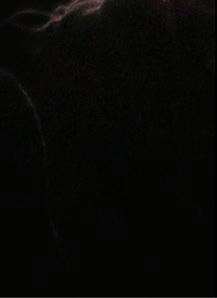


“Something with the culture just instantly made sense, coming from a punk background. I think footwork music is pretty subversive. It’s raw.”
As told to LEOR GALILNICK ACCARDI
but then I started hearing some electronic music and tried to incorporate that a little bit. I never tried making [footwork] tracks until I came to Chicago. Going to Battlegrounds, meeting Manny, Phil, and Rashad—that was the catalyst for me to be like, “Let me try to make some tracks.”
Right after graduating high school, I was working two or three jobs. I was doing food delivery in North Carolina. I knew that they have bike messengers up in Chicago, and there would probably be more opportunities for me here. Through touring with Whatever Brains, I knew some people and played in Chicago before I came here. I knew it was pretty a ordable; it was cheaper for me to get a place in Chicago than it was for me to get something back home.
I fired up Google one day and started calling all the messenger companies I could find. In retrospect, that was probably crazy to be a bike-messenger manager in Chicago getting an e-mail like, “Yo, I’m this 18-year-old kid. I don’t even live there, but I want to come work for you guys.”

Footwork came on my radar through YouTube: Wala Cam dance videos. I didn’t make the connection between the dance and the music till a couple years later. How it came to me actually getting connected was, I’m here in Chicago, and I don’t really know a lot of people. I’m 18; Chicago’s a very 21-and-up town. I went to see an all-ages show with Rashad and Spinn at the Metro, and at the end of the night they were like, “Catch us tomorrow—we’re gonna be at Battlegrounds.”
When you go to Battlegrounds, pretty much everybody that’s there is dancing. If you’re not dancing, you’re gonna look out of place—it’s a real tight-knit community anyway. People were probably scratching their heads, like, “Who’s this new guy.” But I was received warmly as soon as I walked in the door. Manny had come up to me, introduced himself, and started introducing me to a bunch of people.
That first day I went to Battlegrounds was a legendary night. A group called Red Legends was battling everybody—that’s honestly one of the craziest nights for footworking I’ve ever seen. Something with the culture just instantly made sense, coming from a punk background. I think footwork music is pretty subversive. It’s raw. It’s not like a club setting; it’s all ages.
You couldn’t really hear footwork tracks to the extent that you can get it now—it’s almost a little bit oversaturated now. But back then, you could be listening to music at Battlegrounds and not recognize a single track for, like, hours—this is all hot off the presses. That’s how I got started. After the fi rst time going to Battlegrounds, I kept going to di erent events.
[For Traffic Control ] I definitely wanted to do something that was less sample based—like, less straight remixes. There’s obviously still samples on the album; I used samples from cell phones, tra c sounds, and social-media videos. Those were the motifs I wanted to draw on for the album, ’cause it’s something that really reflected my life in a very personal and honest way. The song “Tra c Control,” with all the tra c sounds on it, that was a track that I had wanted to make for a couple years. I had a concept in my head just from being a bike messenger; it just took me a couple years to unlock what I needed to do on that one.
There’s two [bike messenger] categories: one is food messengers, and the other people are, like, paper messengers, legal messengers, whatever you want to call it. There’s been a mass exodus from the Loop—everyone’s working from home, so we’ve been struggling just keeping our work up because no one’s downtown right now. We’re hanging in there.
I’m the operations manager at my company. I got promoted almost two years ago. I still do deliveries, but I’m the leader for my bike team. I’m just trying to think one step ahead, and trying to fi gure out what we can do to stay afloat and keep the money coming in. I’ve got about 20 people on my team.
All these different big shifts happen, where we had 9/11 and now we’ve got COVID, and that is gonna drastically alter the bikemessenger game. It’s definitely an industry that was already on the cutting block in some ways. In the ten years that I’ve been in Chicago, I’ve noticed a lot of changes: less companies, companies are folding, there’s way less bike messengers out.
I just moved houses. I haven’t done music in two months ’cause all my stuff’s been in boxes—I just got all my music stuff set up, so I’m real excited. I was initially trying to go do some shows, but it’s been cool. Got a new house, and that’s something to be happy for. v
MUSIC Stay Home. Stay Positive. Stay Connected. oldtownschool.org
We can’t wait to get back to making music and dancing together at the Old Town School!
In the meantime, many of our classes are currently running online, and we are actively working on more ways to keep you making music and learning new things with us, from home, in the near future.
We are so thankful to be part of the wonderful and supportive arts community in Chicago and are especially thankful for all our dedicated students and teaching artists persevering with us during this time.
For updates, rescheduled concert info, ways to help support our staff & more please visit oldtownschool.org/alert
Stay safe, sane, and keep on playing from all of us at Old Town School of Folk Music!
CHICAGO NATIVE TATIANA HAZEL has been on a journey that merges fashion, visual design, and music since she was 13 years old, when she began posting videos of herself singing and playing acoustic guitar on YouTube. Now in her early 20s, the Los Angeles-based singer-songwriter has developed a solid following while deepening her talent for applying an optimistic, determined lens to her confessional reflections on relationships, sexuality, breakups, career impasses, and other life dilemmas. On her new EP, Duality , Hazel uses her velvety vibratro to share personal tales made irresistible with sugary pop hooks, all wrapped in shimmery 1980s-inspired synth textures and the occasional disco beat. Created almost completely by Hazel, Duality is a more
confident, polished production than her previous work. When I spoke to Hazel last month—shortly after she won the Latin Alternative Music Conference’s Discovery Award, which highlights the work of upand-coming Latinx artists—she told me that the songs on Duality emerged from her determination to resist being pigeonholed into any one category. “I feel a lot of duality within myself—I’m known as a Latinx artist, but I grew up with American pop culture and spent a lot of time between Mexico and the U.S.” The EP’s upbeat, breezy tunes suggest that Hazel is resolving those tensions with ease. On “Right There,” when she sings “It’s going to be O-fucking-K,” she seems pretty convinced—and the feeling is contagious.
—CATALINA MARIA JOHNSONVince Ash hails from Hammond, Indiana, but at age 23 he already raps like he’s lived lifetimes in some of the country’s most storied hip-hop scenes. On his new EP, Vito (POW Recordings), he braids westcoast G-funk storytelling with humid Memphis instrumentals—the title track coalesces around a stuttering sample of iconic southern crew Three 6 Mafia shouting out their own name. Ash’s resonant voice can flit between sinister and sympathetic in a couple lines, and his spry performances on Vito bring out the complexities embedded in his darkest raps. He contemplates the pain of gun violence in such intimate detail that it could exhaust just about anyone, but he o en sounds energized by his own urgent need to record every word. His short verses can bear great weight, and though Vito runs only 15 minutes, he doesn’t waste even one of them. I’ve consistently returned to a couple of brutal lines from “Back N the Dayz,” which he contrasts with a gently cascading, piano-driven instrumental: “Was 16 when I finally shed my last tears / And through the years seein’ my peers disappear before my eyes.” Ash’s high-speed delivery makes these words rush by like drops in a flood, but they still underscore how frequently Black Americans grapple with such life-altering grief—and his resolute performance lends an empathetic shoulder to anyone who has suffered like he has.
—LEOR GALIL
Julianna Barwick, Healing is a Miracle Ninja Tune

juliannabarwick.bandcamp.com/album/healingis-a-miracle

While wounds can be stitched and broken bones may mend, other types of injuries never fully heal;
perhaps they linger as phantom pain or burrow deep into the brain. It’s these imperceptible traumas—and the impossibility of recovery—that consume Julianna Barwick on her new fourth solo album, Healing Is a Miracle. The Los Angeles-based composer and vocalist cultivated her voice as a church chorister while growing up in Louisiana, and she began cra ing her own music in the mid2000s—building gauzy atmospheres in solitude with little more than her reverb-armored soprano. For Healing Is a Miracle , her debut on vanguard electronic label Ninja Tune, Barwick enlisted a coterie of collaborators to add much-needed flesh to her sonic skeletons. Harpist Mary Lattimore shudders her way through “Oh, Memory,” the vocals of Sigur Rós founder Jónsi echo wistfully in imaginary canyons on “In Light,” and producer Nosaj Thing— who’s worked with the likes of Kendrick Lamar and Chance the Rapper—helps Barwick close the barely 30-minute album with the indulgent vocal overdubs and muffled percussion of “Nod.” To make this material, Barwick set aside the primitive headphone setup she used on her previous releases and recorded using studio monitors for the first time. That allowed her to approach Healing Is a Miracle with an emphasis on the physicality of sound—how a bass tone can resonate through the body or a single note can penetrate every pore—and made possible some of the record’s boldest moments. On the dizzying siren song “Flowers,” she pummels her hyperlaminated vocal loops with blistering synth pulses. While Barwick’s creative process is indebted to synthesis and circuitry, Healing remains tethered to the mystical realms of nature while her many voices ring like relics of revelation. —SHANNON NICO SHREIBAK
Peter Brötzmann & Fred LonbergHolm, Memories of a Tunicate Relative Pitch
relativepitchrecords.bandcamp.com/album/ memories-of-a-tunicateTatiana Hazel, Duality Downtown soundcloud.com/tatianahazel
German reeds player Peter Brötzmann turned 79 in March, so it would be developmentally appropriate for him to take a look back. But memories are a mixed blessing for a devoted practitioner of improvised music. While they can build up a shared understanding between partners, making it easier for them to come up with something that works in a pinch, they can also dilute or foreclose on the in-the-moment magic between players that makes the music so thrilling. Knowing this, Brötzmann has kept himself moving creatively by dissolving many productive relationships and putting others on ice for decades. The Chicago Octet/Tentet, which consisted of players living in or associated with this city, was one of his most productive ensembles between 1997 and 2011. But since Brötzmann disbanded it, he has rarely played with any of its members—until now. In 2019 Brötzmann reconnected with cellist Fred Lonberg-Holm, a founding octet member and once a frequent duet partner, for this 62-minute studio session. (Lonberg-Holm moved from Chicago to Kingston, New York, in 2017.) Neither man’s playing has mellowed, but they pay close attention to each other’s musical choices—a sharpened focus that may have arisen from their time apart. The resulting improvisations are musically varied but consistent in their dark emotional tone. The coarse tenor-sax cries and arcing, feedback-sharpened bowing on “Salp” (all the tracks are named for marine invertebrates) sounds like a funeral keen. “Pyrosomes” feels even more tragic, with Brötzmann playing slow melodies on a Hungarian tárogató while LonbergHolm surrounds his lines with electronically distorted smears. And on the closing “Stolidobranchia,” delicate pizzicato figures give way to a bracing spray of electronically reversed notes while the saxophonist eases into a restrained, sorrowful blues. If you’re looking for a soundtrack to your opening-up party, you should look elsewhere, but if you need to hear something that takes the full measure of what it feels like when things end, this album is your companion.
—BILL MEYER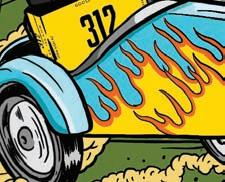



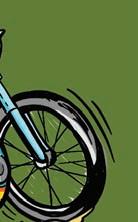
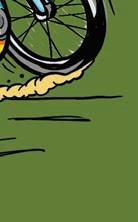 Park Hye Jin, How Can I
Tune
Park Hye Jin, How Can I
Tune











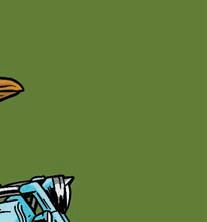

South Korean producer Park Hye Jin makes evocative house music for late nights. On her new EP, How Can I (Ninja Tune), her vocal delivery and production are poised and searing, building on the template of her 2018 debut, If U Want It . On the EP’s first track, “Like This,” she accompanies a swell of synth pads and percussion with a repeated line about how she’s opening her eyes, as if she’s been in a hypnotic trance. While If U Want It featured the scorching kiss-off “I Don’t Care,” Park takes the art of rejection to the next level on “No,” when she switches from Korean to English—and from a breathy murmur to a piercing, remorseless declamation—to tell someone to “shut the fuck up.” She’s equally frank on “Can You,” despite describing conflicting feelings; as she vacillates between singing “Can you be my baby?” and “I fucking hate you,” the barreling kick drum seems to further unsettle her already tortured mind. Park’s diverse musical palette has been evident since her 2018 self-titled mixtape, which incorporates snatches of funk and hip-hop, and she pushes her eclecticism even further this time around. On the footwork-indebted “How Come,” the most notable example, she adds a midsong blanket of shimmering synths to suffuse a vocal sample and a skittering beat with the emotional tension of her other work. No matter which mood or style she’s trying to invoke, Park transforms whatever space you’re in into a prismatic, makeshi dance floor.
 —JOSHUA MINSOO KIM
—JOSHUA MINSOO KIM








In 2005, Los Angeles percussionist, DJ, arranger, and producer Carlos Niño began collaborating with fellow Angeleno Miguel Atwood-Ferguson, a multi-instrumentalist, composer, and music director. That year, Atwood-Ferguson joined Niño’s expansive soul-jazz collective, Build an Ark, and helped record studio albums by two of Niño’s other projects: With Voices, the final full-length from progressive hip-hop production duo AmmonContact, and Living Room , from jazzy downtempo unit the Life

Carlos Niño & Miguel AtwoodFerguson, Chicago Waves International Anthem intlanthem.bandcamp.com/album/chicago-waves
The yellow newspaper boxes that dot the streets of Chicago are essential to the Reader brand. “They are a very iconic symbol for the Reader,” said local artist Merlot. “They’re also prime real estate for gra ti artists.” In fact, those beat-up metal boxes were her main inspiration when designing the new street-art-style graphics for the newest Reader merchandise.
Merlot grew up in Seattle, and for the past five years, Chicago has been her home and artistic playground. She came to the city to focus on art and to take a design job, and moving here has done a lot to help her develop her craft and style. Merlot has been painting since 2008 and designing since 2009, but she credits her growth and success mainly to the communities in Chicago that so wholly embrace artwork and allow artists to experiment.
Apart from the boxes, another iconic symbol of the Reader brand is the backwards “R,” which made this a perfect project for Merlot, since much of her work plays with typography.
“I have been trying to fi nd my voice through art, honing in on my style and what speaks to me. Letters have always been a love of mine, and that’s what I’ve gravitated towards and want to continue to excel and push boundaries with.”
For this project, Merlot and the Reader partnered with Rowboat Creative, a Chicago-based screen printer and custom branded merchandise manufacturer, and all three entities are excited for these product launches.

“I wanted to bring a little of my world into the Reader’s by creating my version of the box with my name written on it, as well as a 3D letter ‘R’ that embraces some of the current pieces I’ve been working on,” Merlot said. “It was a great experience, as [Rowboat Creative and the Reader team] were very open to creativity and let me have free rein with my design.”
To check out Merlot’s work, fi nd her on Instagram @merlotism or go to merlotism.com. Her Reader shirts and hoodies will be available at chicagoreader. creativeswhocare.org throughout July.
Force Trio (both were released in 2006). Chicago drummer Makaya McCraven clearly understood their partnership when he brought in Niño and Atwood-Ferguson to augment the hip-hop electricity and downtempo elasticity on the D side of his monumental 2018 double LP, Universal Beings When McCraven celebrated the album’s release in November 2018, Niño and Atwood-Ferguson flew to Chicago to perform, and in their free time, the two of them played an improvised set opening for drummer Jeremy Cunningham at Co-Prosperity Sphere. Thus was birthed Chicago Waves (International Anthem), a live recording of that show that rests on the interplay between Atwood-Ferguson’s wa ing violin and Niño’s minimal, trembling percussion. The musicians’ telepathic connection enlivens even the most hushed moments, lending an arresting charge to every microscopic shi . —LEOR GALIL
the ruling class. Pyrrhon find a groove on the smoggy “State of Nature,” while front man Doug Moore venomously bemoans the scorched, barren planet we’re foisting on generations not yet born. It ain’t pretty, but the band’s attention to detail is exquisite, and a diabolical beauty occasionally pervades the album’s most unnerving passages: the loose, improvised guitars and jazzy drums of “Solastalgia” collide and rattle while Moore’s vocals echo as if the entire band were free-falling in a pitch-black, cavernous void. Despite its dire ruminations, Abscess Time might still count as a respite from real-world calamity, given that dissecting its intricate tracks requires your complete attention—it might even give you a little more hope for the future, if only because you’ll want to see where Pyrrhon head next. —JAMIE LUDWIG
Metal has a reputation as an escapist genre. That could be because some bands indulge in the theatrics and fun of dragons, witchcraft, and swordplay, or because others traffic in gruesome or apocalyptic themes that feel too outsize and horrific to accept as real—even when they’re a staunch reaction to a specific place and time. All of that is to say that in 2020, some of the most compelling metal albums are hitting too close to home for even the most reality-averse fans to ignore—including Abscess Time, the new fourth album from New York avant-garde metal band Pyrrhon. Written over the past couple of years and recorded this winter with Colin Marston (Behold . . . the Arctopus, Dysrhythmia, Krallice), it uses a complex amalgam of twisted metal, gutter-scraping noise rock, and heady experimentalism to take aim at the power struggles, cultural dissonances, and technological shifts that have contributed to the colossal shitshow we find ourselves in, and to cast light on the ongoing challenge of survival. “Down at Liberty Ashes” (which features samples from Taxi Driver ) discharges its death-metal vocals, discordant guitars, and syncopated, plodding beats at a system that forces workers to defi ne themselves by their trade and serve

Vinyl Digital spectacular-diagnostics.bandcamp.com/album/ thebeautifulmusic
Chicago hip-hop producer and visual artist Robert Krums has been making music for nearly two decades, and for most of that time he went by the name Earmint. About five years ago, he reinvented himself as Spectacular Diagnostics. Fortunately, the reputation in the national underground he’d earned as Earmint helped him assemble a hit squad of guest MCs—Vic Spencer, Quelle Chris, Jeremiah Jae, Westside Gunn, Conway the Machine—for his first Spectacular Diagnostics album, 2015’s Raw Game . He didn’t reach out to his rapper network for the new Thebeautifulmusic (released by German label Vinyl Digital), an instrumental release that throws his mystical touch into sharper relief. Krums makes drums sound like they’re floating even when they sting with precision; his keyboards exude an air of glamour and grime; and his durable bass stitches together the most minimalist compositions while remaining in the shadows. On Thebeautifulmusic , Krums steers his jazz-influenced instrumentals toward languid lounge (“Pour One Out,” “Clouds”) and glitzy disco (“Routines”), demonstrating how these foundational genres communicate with each other as he rearranges them into brandnew conversations.
—LEOR GALIL v
THOUGH THEY WERE around for only a few years in the early 1980s, Naperville punk band Protagonists did a lot in that brief lifespan, recording a tape with legendary engineer Phil Bonnet, releasing a seven-inch on the label run by fellow suburban warriors Reaction Formation, and rocking venues across the city and suburbs—not bad for high school kids! On Friday, July 24, local reissue label Alona’s Dream will drop 1983-1985 , which compiles buzzing, new-wave-inflected jams from both Protagonists releases as well as basement demos and live cuts. Their themes will sound familiar to anyone who’s been a suburban teen: Mondays suck, and having a crush on somebody usually sucks, but fish sticks (when prepared and served correctly) are among the most delicious foods on Earth. Preorders of the vinyl pressing come with extra goodies, including stickers, postcards, and a poster.
Gossip Wolf first heard local threepiece Gosh Diggity on the 2019 EP Banana Brains, whose charmingly threadbare indie rock mixes dinky drum machine and plasticized keyboard with gentle vocal harmonies. On July 1, Gosh Diggity selfreleased another EP, Bedtime for Bonzos, which adds a little muscle to their tender, sweet-natured sound. “I’m Afraid of Hating Everyone” is about resisting isolation and despair, not embracing them.
Last week, local punks Le Tour dropped S/T 2020, whose five songs were destined for their third full-length, which never came out. The band played their last show in 2018. “The emotional aspect of the music and performances had always been a strain on me, and I came to the realization that I was happier just making music for myself,” says guitarist-vocalist Patrick Campbell . The songs on S/T 2020 channel Le Tour’s anxieties about unchecked police brutality, encroaching fascism, and festering white supremacy into rambunctious rippers that elevate their air of haggard exhaustion into a righteous heaviness. —J.R. NELSON AND LEOR GALIL

Got a tip? Tweet @Gossip_Wolf or e-mail gossipwolf@chicagoreader.com.

Betts Band 7/17/2021, 6 PM, Aragon Ballroom, rescheduled; tickets purchased for the original date will be honored, 17+ Elijah Bossenbroek 4/9/2021, 7:30 PM, PianoForte Studios, rescheduled b Cowboy Mouth 7/25, 8:30 PM, SPACE, Evanston, postponed until a date to be determined b
Dance Gavin Dance 4/10/2021, 5:30 PM, Aragon Ballroom, rescheduled b Delta Spirit 5/2/2021, 9 PM, Thalia Hall, rescheduled, 17+ Disturbed 8/8/2021, 7 PM, Hollywood Casino Amphitheatre, Tinley Park, rescheduled; tickets purchased for the original date will be honored b
Dee Alexander Quartet 7/97/11, 7 and 9 PM; 7/12, 4 and 8 PM, Jazz Showcase b Chris Barron 7/16, 3:30 PM, livestream at stageit.com b Beach Bunny 7/15, 9 PM, livestream at audiotree.tv b Jarod Bufe Quartet 7/22, 7 PM, FitzGerald’s, Berwyn F Chicago Honky Tonk DJs 7/19, 3 PM, FitzGerald’s, Berwyn F
Chicago Skyliners Quartet 7/19, 7 PM, FitzGerald’s, Berwyn F
Crystal Method 7/18, 9 PM, livestream at stageit.com b Cybertronic Spree 3/8/2021, 8 PM, Lincoln Hall, 18+ Diet Cig 7/31, 7 PM, livestream at noonchorus.com b Dozen Buzzin’ Cousins, MMCM 7/17, 7 PM, FitzGerald’s, Berwyn F Dreamstream ESS benefit night one featuring Laetitia Sonami/Paul DeMarinis/ Sue-C, Claire Chase, Katinka Kleijn, Miya Masaoka, Craig Taborn, DJ John Corbett 7/17, 7 PM, livestream at ess.org b Dreamstream ESS benefit night two featuring Laetitia Sonami & Zeena Parkins, Ben LaMar Gay & Damon Locks, DJ Sadie Woods 7/18, 7 PM, livestream at ess.org b Driver Era, Wrecks 2/19/2021, 7:30 PM, the Vic b Feel Good 7/13, 7 PM, Beverly Arts Center b Cameron Foreman 8/1, 2 PM, Reggies’ Roof Deck F Ginger Road 7/27, 7 PM, Beverly Arts Center b
Guided By Voices 7/17, 4 PM, livestream at noonchorus. com b
Hat Stretchers 7/18, 1 PM, FitzGerald’s, Berwyn F
Holdouts 7/20, 7 PM, Beverly Arts Center b HotHouse Global presents Concert for Cuba night one featuring Orbert Davis’s Chicago Jazz Philharmonic, Osain Del Monte, Ozomatli, Grupo Moncada, Bush, Arturo O’Farrill & the Afro Latin Jazz Orchestra, Síntesis, Tom Morello, and more 7/18, 7 PM, livestream at twitch.tv/ hothouseglobal F b HotHouse Global presents Concert for Cuba night two featuring Dionne Warwick, Jane Bunnett & Danae Olano, Barbara Dane & Pablo Menéndez, Omar Sosa, John Santos, Jon Cleary, Susana Baca, Orquesta Aragon, Caverchelo.comb & Ben Lapidus, and more 7/19, 7 PM, livestream at twitch.tv/ hothouseglobal F b Jazz Record Art Collective featuring Mardra Thomas & Reggie Thomas 7/16, 7 PM, livestream at facebook.com/ jazzrecordartcollective F b Jazz Record Art Collective presents Geof Bradfield & Ryan Cohan 7/23, 7 PM, livestream at facebook.com/ jazzrecordartcollective F b Kaytranada, Stwo 5/8/2021, 9 PM, Aragon Ballroom, 18+ Luke Malewicz Quartet 7/22, 8 PM, livestream at facebook. com/fultonstreetcollective F b
Megadeth, Lamb of God, Trivium, In Flames 8/6/2021, 6 PM, Hollywood Casino Amphitheatre, Tinley Park b Mr. Gac 7/17, 9 PM, FitzGerald’s, Berwyn F
Music Friendly Distancing featuring Fee Lion, Glitter Moneyyy, and more 7/10, 5 PM, livestream at emptybottle.com b
Isabelle Olivier 7/16, 7/23, and 7/30, 6:30 PM, PianoForte Studios b Angel Olsen, Hand Habits 7/14, 8 PM, livestream at noonchorus.com b Option series presents Tashi Dorji in conversation with Ken Vandermark 7/20, 8 PM, livestream at ess.org F b LeAnn Rimes 7/23, 7 PM, livestream at stageit.com b Sepultura, Sacred Reich, Crowbar, Art of Shock 3/14/2021, 7 PM, House of Blues, 17+ Sy Smith 7/17, 8:05 PM, livestream at stageit.com b Tempo Nasty 7/16, 6 PM, FitzGerald’s, Berwyn F Denise Thimes Quartet 7/308/1, 8 and 10 PM; 8/2, 4, 8 and 10 PM, Jazz Showcase b Tomita 7/23, 6 PM, FitzGerald’s, Berwyn F
Harry Tonchev Trio 7/21, 7 PM, FitzGerald’s, Berwyn F
NOTE: Contact point of purchase for information about ticket exchange or refunds
David Archuleta 7/31, 6 and 9 PM, City Winery, postponed until a date to be determined b Nicole Atkins 8/13/2021, 8:30 PM, Lincoln Hall, rescheduled; tickets purchased for the original date will be honored, 18+ Selwyn Birchwood 7/24, 8 PM, SPACE, Evanston, canceled Black Crowes 8/7/2021, 8 PM, Hollywood Casino Amphitheatre, Tinley Park, rescheduled; tickets purchased for the original date will be honored b Blackberry Smoke, Allman
Early Day Miners 7/15, 9:15 PM, Empty Bottle, canceled May Erlewine & the Woody Goss Band 7/22, 8 PM, SPACE, Evanston, canceled b 5 Seconds of Summer 6/18/2021, 7 PM, Huntington Bank Pavilion, rescheduled b Flora Cash 6/18/2021, 8:30 PM, Lincoln Hall, rescheduled; tickets purchased for the original date will be honored b Frames 9/23/2021, 7:30 PM, the Vic, rescheduled; tickets purchased for original date will be honored, 18+ Evan Giia 8/14, 9 PM, Schubas, canceled, 18+ David Gray 7/19/2021, 8 PM, Huntington Bank Pavilion, rescheduled; tickets purchased for original date will be honored b
Inhaler 9/16, 7:30 PM, Lincoln Hall, canceled Jay Electronica 4/30/2021, 9 PM, the Promontory, rescheduled Jazz is Phish 7/28, 8 PM, City Winery, postponed until a date to be determined b Kaleo 6/19/2021, 7 PM, Aragon Ballroom, rescheduled; tickets purchased for the original date will be honored b
Dermot Kennedy 7/31/2021, 7 PM, Aragon Ballroom, rescheduled; tickets purchased for the original date will be honored b Bill Kirchen 7/23, 8 PM, SPACE, Evanston, postponed until a date to be determined b
Lane 8 9/18/2021, 9 PM, Aragon Ballroom, rescheduled; tickets purchased for previously scheduled dates will be honored, 18+
Legions of Metal Fest 9/4, 5 PM; 9/5, 3 PM, Reggies’ Rock Club, postponed until a date to be determined
Gordon Lightfoot 3/6/2021, 8 PM, Copernicus Center, rescheduled; tickets purchased for previously scheduled shows will be honored b
Stephen Marley 3/27/2021, 8 PM, SPACE, Evanston, rescheduled b Murder by Death, Amigo the Devil 3/14/2021, 7 PM, Thalia Hall, rescheduled b Natewantstobattle, Vespera 4/18/2021, 7 PM, Lincoln Hall, rescheduled; tickets purchased for the original date will be honored b Paris Chansons 7/31, 8 PM, SPACE, Evanston, postponed until a date to be determined b
Jeff Pianki 7/24, 8 PM, Schubas, canceled Polaris 6/24/2021, 9 PM, Lincoln Hall, rescheduled Primus, Wolfmother, Battles 7/20/2021, 7 PM, Chicago Theatre, rescheduled b
The Quarantine Concerts presents Heavy Trip featuring Jessica Moss, Jerusalem in my Heart 8/6, 7:30 PM, rescheduled; livestream at ess.org F
LeAnn Rimes 2/5/2021, 7 PM, Genesee Theatre, Waukegan, rescheduled; tickets purchased for previously scheduled dates will be honored b Josh Ritter 9/10, 8 PM, Fourth Presbyterian Church of Chicago, canceled Bob Schneider 7/30, 8 PM, City Winery, postponed until a date to be determined b Shiner, Sweet Cobra 8/13, 8:30 PM, Lincoln Hall, canceled
Bria Skonberg 3/14/2021, 7 PM, SPACE, Evanston, rescheduled; tickets purchased for previously scheduled dates will be honored b Caroline Spence, Dori Freeman 7/29, 7:30 PM, SPACE, Evanston, canceled Rod Stewart, Cheap Trick 7/21/2021, 7:30 PM, Hollywood Casino Amphitheatre, Tinley Park, rescheduled; tickets purchased for the original date will be honored b Weathers, Moby Rich, Kenzo Cregan 2/28/2021, 7 PM, Schubas, rescheduled; tickets purchased for previously scheduled dates will be honored b
Wilco, Sleater-Kinney, Nnamdï 8/29, 6 PM, Pritzker Pavilion, Millennium Park, postponed until a date to be determined in the summer of 2021 b Wild Rivers, Allman Brown 8/9, 8 PM, Lincoln Hall, canceled v
It’s a well-known fact that for many older Americans, the home is their single biggest asset, often accounting for more than 45% of their total net worth. And with interest rates near alltime lows while home values are still high, this combination creates the perfect dynamic for getting the most out of your built-up equity. But, many aren’t taking advantage of this unprecedented period. According to new statistics from the mortgage industry, senior homeowners in the U.S. are now sitting on more than 7.19
trillion dollars* of unused home equity.
Not only are people living longer than ever before, but there is also greater uncertainty in the economy. With home prices back up again, ignoring this “hidden wealth” may prove to be short sighted when looking for the best long-term outcome.
All things considered, it’s not surprising that more than a million homeowners have already used a government-insured Home Equity Conversion Mortgage (HECM) loan to turn their

home equity into extra cash for retirement.
It’s a fact: no monthly mortgage payments are required with a government-insured HECM loan; however the borrowers are still responsible for paying for the maintenance of their home, property taxes, homeowner’s insurance and, if required, their HOA fees.
lender, found that over 98% of their clients are satisfied with their loans. While these special loans are not for everyone, they can be a real lifesaver for senior homeowners - especially in times like these.

The cash from a HECM loan can be used for almost any purpose. Other common uses include


Today, HECM loans are simply an effective way for homeowners 62 and older to get the extra cash they need to enjoy retirement.
Although today’s HECM loans have been improved to provide even greater financial protection for homeowners, there are still many misconceptions.
For example, a lot of people mistakenly believe the home must be paid off in full in order to qualify for a HECM loan, which is not the case. In fact, one key advantage of a HECM is that the proceeds will first be used to pay off any existing liens on the property, which frees up cash flow, a huge blessing for seniors living on a fixed income. Unfortunately, many senior homeowners who might be better off with a HECM loan don’t even bother to get more information because of rumors they’ve heard.
In fact, a recent survey by American Advisors Group (AAG), the nation’s number one HECM












making home improvements, paying off medical bills or helping other family members. Some people simply need the extra cash for everyday expenses while others are now using it as a safety net for financial emergencies.
If you’re a homeowner age 62 or older, you owe it to yourself to learn more so that you can make the best decision - for your financial future.
*Source: https://reversemortgagedaily.com/2019/12/17/senior-housing-wealth-reaches-record-high-of-7-19-trillion

Reverse mortgage loan terms include occupying the home as your primary residence, maintaining the home, paying property taxes and homeowners insurance. Although these costs may be substantial, AAG does not establish an escrow account for these payments. However, a set-aside account can be set up for taxes and insurance, and in some cases may be required. Not all interest on a reverse mortgage is tax-deductible and to the extent that it is, such deduction is not available until the loan is partially or fully repaid.


AAG charges an origination fee, mortgage insurance premium (where required by HUD), closing costs and servicing fees, rolled into the balance of the loan. AAG charges interest on the balance, which grows over time. When the last borrower or eligible non-borrowing spouse dies, sells the home, permanently moves out, or fails to comply with the loan terms, the loan becomes due and payable (and the property may become subject to foreclosure). When this happens, some or all of the equity in the property no longer belongs to the borrowers, who may need to sell the home or otherwise repay the loan balance. V2020.03.16

NMLS# 9392 (www.nmlsconsumeraccess.org). American Advisors Group (AAG) is headquartered at 3800 W. Chapman Ave., 3rd & 7th Floors, Orange CA, 92868. Licensed in 49 states. Please go to www.aag.com/legal-information for full state license information.
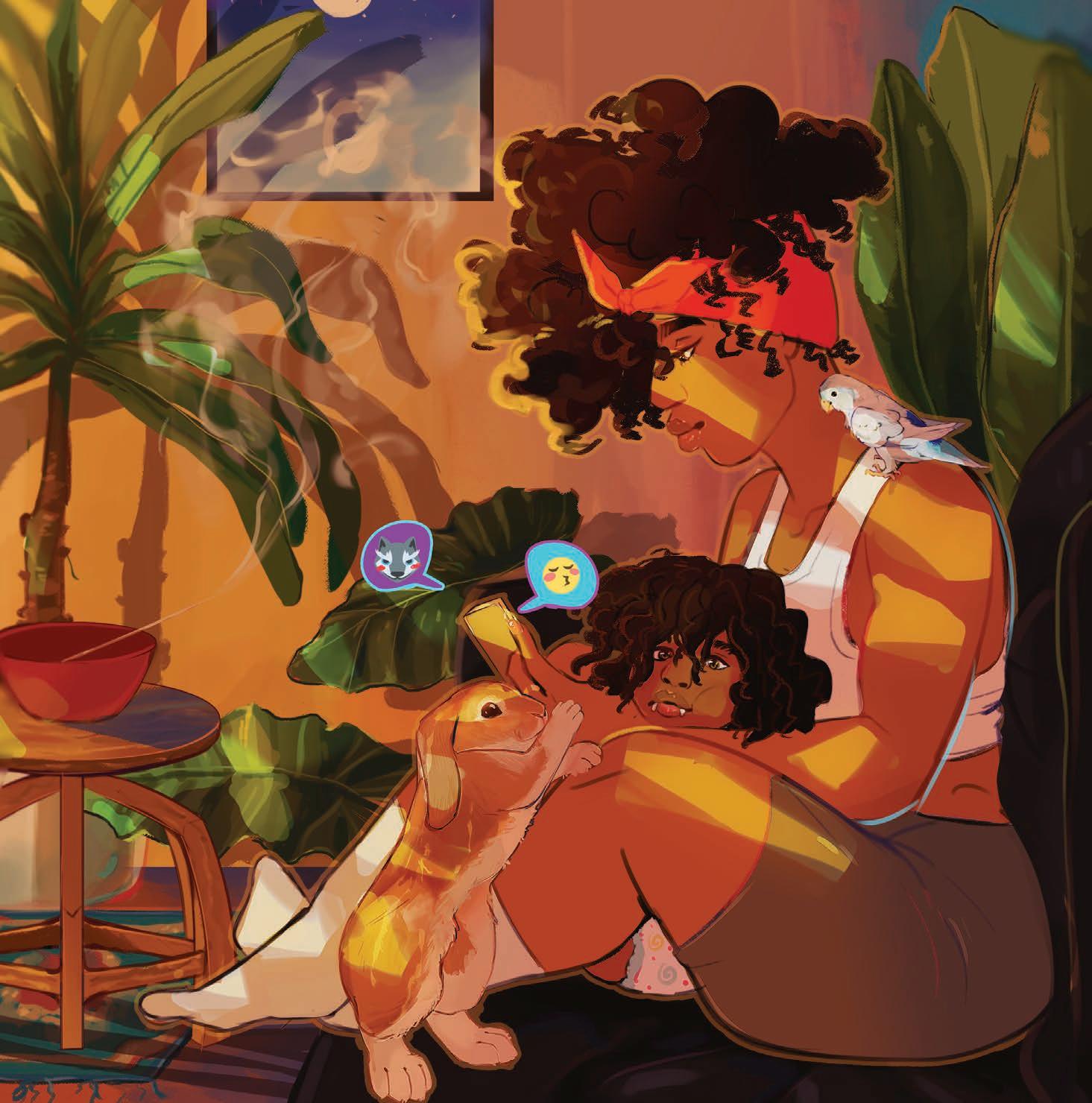



Q: I’m a lesbian in a longterm relationship. A er much conversation with my partner we’ve decided to explore cuckolding role-play together. I’m not comfortable bringing another person into the relationship—especially right now—but I am willing to explore this as a fantasy. The thing is, I’m having a hard time figuring out how to do it. There’s not a lot of info out there on how to engage in cuck role-play, especially between two women. Could you point me in the right direction here so we can have some fun while remaining monogamous?

—COULDN’T UNDERGO CUCKOLDING KINK’S GLORIES IN REAL LIFE
A: “You can definitely introduce cuckolding themes and even a cuck identity into your relationship while remaining monogamous,” said Thomas, a married gay man and former cuck blogger whose husband has cucked him many times IRL. “In fact, many cuckold relationships are monogamous and cucking remains in the fantasy realm.”
Thomas even sees his relationship as monogamous—at least on his side. “The definition of monogamy varies greatly for each couple,” said Thomas, “and I do consider myself monogamous because I’m the cuck and so I don’t technically have sex with other guys. My husband
does. I just get to watch sometimes.”



Let me quickly define terms for readers who somehow missed the 300 other columns I’ve written about cuckolding over the years: A cuckold relationship is a one-sided open relationship where one partner is free to have sex with other people while the other partner remains faithful. What distinguishes a cuckold relationship from your standard open relationship where one person doesn’t care to sleep around is the element of humiliation. In most cuckold relationships, CUCKGIRL, the cuck—the person who remains faithful—enjoys being teased or mocked by their “unfaithful” partner; sometimes the “unfaithful” partner’s lover or lovers, usually referred to as “bulls,” participates in the erotic humiliation of the cuck partner.





Thomas created a popular Tumblr blog about gay male cuckold relationships back when there was very little information about gay cuckolds online, CUCKGIRL, much less gay cuckold porn or other resources. In fact, there was once so little info online or anywhere else about gay cuckolds that many people—myself included—weren’t convinced that gay cuckolding was actually a thing.


Cuckolding wasn’t a thing in Thomas’s marriage at the start. “Total monogamy had always been the

plan,” said Thomas. “But I got interested after seeing some straight cuckold porn. I immediately identified with the cuck but I was too embarrassed to bring it up with my husband because it went against our vision of our marriage but also because I only ever saw cuckolding represented in straight porn.” Raising awareness of gay cuckolds— and representing gay cuckold relationships—motivated Thomas to start his blog. So if you’re not finding anything out there about lesbian cuckolding, CUCKGIRL, perhaps you could borrow a page from Thomas’s playbook and create the content and resources you would like to see.

Sadly, Thomas’s gay cuckolding blog is no more. His was just one of the many sex blogs—deeply personal passion projects, one and all— that were lost forever after the geniuses who ran Tumblr decided to purge adult content from their platform. In a matter of days Tumblr saw its traffic fall by one-third and its value crater. Yahoo paid $1.1 billion to acquire Tumblr back in 2013, but six years and one porn purge later the site sold for just $20 million—less than 2 percent of what Tumblr was worth when it still hosted Thomas’s gay cuckolding blog. (The moral of this story: Don’t fuck with gay cuckolds.)
Thomas thinks it’s entirely possible for you and your partner to enjoy lesbian
SAVAGE LOVE
It’s possible to enjoy lesbian cuckolding fantasies and not open a relationship.
cuckolding fantasies while keeping your relationship monogamous on both sides. Indeed, that’s what Thomas and his husband did for many years. “My husband and I started playing around with cuckold fantasies several years into our marriage and it remained a hot roleplay fantasy for a long time,” said Thomas. “It was fun, it was sexy, and it improved our ability to communicate with each other about sex in general.” They kept their fantasy play simple at first— for example, his husband would talk about a guy he found hot while Thomas blew him or Thomas would tease his husband about a sexy new coworker of his that he knew his husband had a crush on. They would use insertion toys and pretend they were other guys’ dicks and only gradually did they introduce some humiliating dirty talk into their cuckold role-play talk, and then only as Thomas’s husband became more comfortable with the idea of humiliating him. “Making use of cam sites is also a great way to explore if you’re comfortable with that level of monogamish,” said Thomas. “If you’re a cuck like me, watching your partner perform for someone else is incredibly erotic.”
A more monogamous way to explore cuckolding without opening the relationship—not even a crack—is simply to ask your partner to tell you about her past sexual encounters. Listening to your partner talk about hot experiences she had with other women while you masturbate or while you two fuck is a great way to explore cuckolding without actually opening up your relationship. You’ll be bringing people up, CUCKGIRL, not bringing them in.
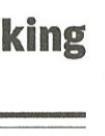

“But just as a gay cuckold couple’s fantasies aren’t identical to a straight cou-
ple’s cuckold fantasies, a lesbian couple’s fantasies aren’t going to be the same either,” said Thomas. “CUCKGIRL and her partner just have to find their own way. But the most important thing is to keep communicating. Always communicate! If a particular form of role-play isn’t working, tell your partner. And give each other veto powers and go easy on yourself. Cuckolding is a fantasy that plays with your fears around monogamy and infidelity—it can be very hot but it can be scary too. So take it slow.”
Like a lot of sex bloggers who were kicked off Tumblr, Thomas migrated over to Twitter, where he currently has more than 13,000 followers. His handle on Twitter is @gaycuckoldhubby.
Q: I’m a straight lady in my mid-30s and I just found out my husband of six years and partner for ten has been cheating on me for the last five years. As far as I knew, we had a perfect marriage—probably the best relationship, sexual or otherwise, I’d ever been in. If this was a one-off affair, I think I could work past this— counseling, open marriage, some sort of solution. But the fact that he’s lied to me for the last five years and that the sex was unsafe (I saw video) disturbs me. My heart doesn’t want this to end—he’s been my best friend, lover, and support system for ten years—but my brain is telling me that even if we renegotiated the terms of our marriage, he’d deceive me again. I’m working with a therapist, but what’s your take?

Once a cheater, always a cheater? I don’t expect an all-knowing answer. But a little perspective would be helpful.
—DUPED WIFE
A: For most of your marriage—for most of a marriage you describe as










perfect—your husband was cheating on you. My perspective/two cents: Instead of regarding everything that worked about your marriage as a lie, instead of seeing every loving moment as just some part of your husband’s long and very selfish con, you might want to see what was good about your marriage and what was bad about your husband as two things that existed side-by-side. So instead of telling yourself, “This was a lousy marriage, it was all a lie, I just didn’t know it,” tell yourself, “It was a good marriage despite his cheating, it wasn’t all a lie, but it was a lot less perfect than I thought.” That’s where you’ll need to get if you want to stay in this marriage—and that may be the biggest “if” you’ll ever confront in your life. And while there are no studies that “once a cheater, always a cheater,” studies have shown that someone who has cheated is more likely to cheat again. Not certain to cheat again, but more likely to cheat than someone who’s never cheated. I’m so sorry you’re going through this, particularly now.
Q: I o en masturbate thinking about the straight boy who wakes up in female underwear, tied up, gagged, and pegged by a female. Is there a name for this fantasy? —GOOD AND SIMPLE PERVERT
A: I can’t give you a name—a name for this sequence of events and mélange of kinks—but I know plenty of professional female dominants that would be happy to give you an estimate. v
Send letters to mail@ savagelove.net. Download the Savage Lovecast at savagelovecast.com. @fakedansavage
ADMINISTRATIVE SALES & MARKETING FOOD & DRINK SPAS & SALONS
Vail Systems (Chicago, IL) seeks a Software Engineer Manager to lead team of developers tasked w/ creating voice apps & web svcs in support of Vail goals. Reqs occasional trvl to Deerfield, IL office. Apply at www.vailsys.com/ about/careers/ (Job SEM-06292020).
Ezza Nails is Hiring Nail Techs - Great Mani / Pedi skills (1yr experience) - Passionate customer service - Committed to Teamwork - Goal-oriented Apply www.ezzanails. com/careers
Relativity (Chicago, IL) seeks Software Engineer to be part of our development of e-Discovery platform. Must be willing to occ. work in the evening or on the weekend. Submit resumes to Recruiting@ relativity.com, to be considered, reference Job ID: 20-9004 in the subject line.
protocols, international audio video, sales, sales management, technical aptitude and marketing. Travel required: approximately 50%. Requires: MBA/ Executive MBA, or foreign equivalent and 5 years of relevant work experience. Resumes only: Ambily Joseph, Anixter Inc., 2301 Patriot Blvd. Glenview, IL 60026 or ambily.joseph@anixter. com
System (CRS) applications. BS & 5 yrs. To apply submit cover letter and resume to: Hyatt Corporation, Attn: Karen Newkirk 150 N Riverside Plaza, Floor 14, Chicago, IL 60606
FOR
& WELLNESS
ARTS
NOTICES
Senior Vice President, Global Enterprise AV. Position based in Glenview, IL with option to work remotely from the United States. The Senior Vice President, Global Enterprise AV will be responsible for developing, leading, and executing global sales and marketing strategy for Anixter’s commercial audiovisual business. This individual must be able to develop and position Anixter as a leader the global audio and visual market. This individual should possess the creative leadership skills necessary to help Anixter build an effective approach to aggressively grow our market share within an international scope. This individual will be required to lead and develop a team of audio visual specialists and sales representatives as well as assist in building strong supplier and customer relationships in the audio visual market. This individual will be expected to recognize shifts in technology in the commercial audio and visual space and how those shifts will affect the market and channel; apply technical expertise to understand customers’ needs; able to work effectively in a “matrixed” organization; and understand the professional audio video global market including industry associations and emerging technology
Sr. Java Developer, Chicago, IL: Create and execute full SDLC Java based application modules for product data management and digital asset management. Review, test, troubleshoot, enhance and debug and developed modules to ensure they meet Global Data Synchronization Network (GDSN) standards and recipient standards. Serve as technical lead on Product Introduction (PI) , product data management platform development. Evaluate and report on projects to Management and Technology Teams. BS in CS or related field and 5 years’ experience required. Exp. must include off-shore team coordination, Agile, APM, Drools API, Elastic Engine, Java 8/ J2EE, Open Symphony Workflow Engine, Oracle, Spring Cloud Configuration, Spring Framework, SQL and Struts 2.0. Send resume to 1WorldSync, Inc. at humanresources@1world sync.com
Plexus Corp. seeks Senior SW Developer in Buffalo Grove, IL. Qualified candidates must have B.S. in Computer Science, Software Engineering, or related; five years of Oracle EBS developer experience, including translating functional requirements into technical solutions and implementing interfaces, conversions, or extensions and reports for Financials, Supply Chain, Manufacturing, or Service modules; experience with JDeveloper, PL/SQL, Workflow, API, BI Publisher, and shell scripting; and knowledge of Oracle EBS 12.1 or higher. Apply by email to: Lindsey.Schmitz@plexus. com
Hyatt Corporation seeks an Senior Software Developer in Chicago, IL to be responsible for the day-to-day application development, support and technical architectural needs for the Central Reservation
TransUnion, LLC seeks AF Analysts II for Chicago, IL location to independently prepare & deliver credit scores royalty reports. Master’s in Accounting/Finance + 2yrs exp. or Bachelor’s in Accounting/Finance + 5yrs exp. req’d. Req’d skills: financial accounting & auditing; budgeting analysis; financial statement analysis; contractual accounting & reporting; vendor contract & licensing analysis; review credit reports; consumer scoring & application of royalties due to third parties; price volume variance analysis; PeopleSoft; Hyperion; Blackline; OBIEE; Salesforce InTouch; Tableau. Send resume to: R. Harvey, REF: TM, 555 W Adams, Chicago, IL 60661
Oral Surgeon
All Kids Dental Center
D/B/A All Family Dental and Braces Elgin, IL, Rockford, IL, and Aurora, IL
Provide oral surgery services to underinsured patient population at offices in Elgin, Rockford, and Aurora, Illinois. Diagnose problems of the oral and maxillofacial regions. Perform surgery and related procedures on the hard and soft tissues of the oral and maxillofacial regions to treat diseases, injuries, or defects. Perform surgery to improve function or appearance of the oral and maxillofacial regions. Must have a Doctorate in Dental Surgery (DDS) or Doctorate in Dental Medicine (DMD)as well as an Oral and Maxillofacial Surgery Certificate. Must be licensed as a Dental Specialist in the State of Illinois. Qualified applicants should send their resume to mary.lindsey@ uniteddentalpartners. com and reference code OS0120.
Logistics Operations Director. Franklin Park, IL. Organize global logistics performance & strategy in accordance w/ company’s policy & procedures; Comm. w/ leaders of each business unit & region re: outbound & inbound transportation contracts, systems, networks & service levels to devel. strategies & create solutions; Implement best practices & create RFP & RFQ
for ocean freight, 3PL, 4PL, rail, truck, & other intermodal contracts; Resp. for advancing company metrics; coord. w/ sub-managers to build & leverage logistics services & business relationships. Req’rd: Master’s degree in Logistics Management, Supply Chain Management, or its Equivalent based on any suitable combo. of educ., training, or exp. determined by a qualified eval. service. Mail resume to Daniel Roe, HR Team Manager, FNS, INC. at 1545 Francisco St, Torrance, CA 90501.
Goby Inc seeks a Data Scientist in Chicago, IL to work w/various connectors like Amazon RDS, Heroku etc. Des. & CR8 Dashboards, Reports, Stories, & Dataflows in Einstein Analytics & Discovery. Work w/Salesforce Communities. Mail resumes to: Goby Attn: Grace Elrod 33 N LaSalle St Ste 500 Chicago, IL 60602
Teacher, Mandarin Program. Intercultural Montessori Foreign Language Immersion School, dba Intercultural Montessori Language School, in Chicago, IL. Teach kindergarten level academic, social and formative skills in both English and Mandarin languages. Req: Bachelor’s degree in Early Childhood Education or related. Fluent in Mandarin. Email resume to careers@ interculturalmontessori. org.
National Council of State Boards of Nursing seeks Psychometrician in Chicago, IL. Must have Ph.D in Statistics, Math., Measurements or rltd quantitative field + 1 yr exp. in job offered or rltd educ measurement & testing role. Duties: Responsible for developing cutting edge testing tools including computer-based testing, conducting operational examination development activities related to psychometrics, and initiating research to improve exam performance. Must have exp: (1) utilizing multiple databases, psychometric/statistical software, such as Python/R/ SAS, and/ or Winsteps; (2) conducting research projects concerning the examination performance and possible improvements; (3) developing psychometric software to support ongoing operational works and new products; (4)
evaluating statistical methods and procedures; and (5) conducting operational examination development activities and statistical modeling and graphic analysis. Send resume to hr@ ncsbn.org w/Job IDXWP052020.
Ann & Robert H. Lurie Children’s Hospital of Chicago seeks Data Developers for Chicago, IL to design, create, deploy & manage ETL or other data integration solutions in a healthcare env. Bachelor’s in Info Systems/related field+2yrs exp req’d. Req’d skills: 2 yrs w/:db architecture & data development. Exp must include: healthcare data & analytics; one of: Java, Python, C++; design of data models; ETL; ODS; Data Marts; Cubes; SSIS; SSRS; SAS; R; T-SQL; validating & cleaning data. Apply at https:// careers-luriechildrens. icims.com/jobs/13051/ data-developer/ job Tracking code: 2020-13051
The Dept. of Oral Medicine & Diagnostic Sciences at the Univ. of IL at Chicago (UIC), located in a large metropolitan area, is seeking a full-time Clinical Assistant Professor. This position is responsible for instruction, assessment and development of curriculum in the Oral Medicine/Orofacial Pain Clinic. Under direction and supervision, this position will assist department in teaching, training, and advising graduate and undergraduate students regarding Oral Medicine and Diagnostic Sciences through didactic and clinical methods, and will utilize knowledge of Oral Medicine, Oral Facial Pain, and related disorders to perform teaching, clinic, and service-oriented tasks, will provide clinical orofacial and dental patient care to a diverse patient population, and will conduct medical science research in the field of Oral Medicine and Oral Facial Pain, publish and present research findings, and participate in curriculum development. Requires a Doctor of Dental Surgery (DDS) degree, or Doctor of Dental Medicine (DMD) degree, or its foreign equivalent, in the field of dentistry or related field of study, 2 yrs of university-based postgraduate training in Orofacial Pain or related training, certification by the American Board of Orofacial Pain,
WANT TO ADD A LISTING TO OUR CLASSIFIEDS? E-mail classified-ads@chicagoreader.com with details or call (312) 392-2970
and a valid IL dental license or eligibility for IL dental licensure. Some travel may be required for conferences or professional development. For fullest consideration, please submit CV, cvr ltr, & 3 references by 8/5/2020 to Susan Lloyd, Dept. of Oral Medicine & Diagnostic Sciences, 801 S Paulina St, Chicago IL 60612 or via email to slloyd2@uic.edu. UIC is an Equal Opportunity, Affirmative Action employer. Minorities, women, veterans, & individuals w/ disabilities are encouraged to apply. UIC may conduct background checks on all job candidates upon acceptance of a contingent offer letter. Background checks will be performed in compliance with the Fair Credit Reporting Act.
Sales Engineer, Power Electronics International Inc. East Dundee, IL Design and testing of electromechanical controls and presentation of expert knowledge of products to existing and future customers. Design custom modifications to our basic equipment to meet individual customer requirements, and to price the equipment. Understand the customers equipment structure, operations capacity, and torque.
Must have a Bachelor’s Degree in Mechanical or Electrical Engineering. The position also requires one (1) year of experience as a Mechanical Engineer. Must also have one (1) year of experience with electromechanical controls; AutoCAD electrical; and the design of overhead
electromechanical cranes. Qualified applicants should submit their resume to pemarketing@peinfo.com and reference job code SE0620.

Palm USA Inc in Chicago, IL; Marketing Specialist w/BA in Business or related, Research customer’ preference, Forecast marketing, sales trends; Devel. procedures for identifying advt. needs, Send resume@ Jin Noh 5050 W. Lawrence Ave. Chicago, IL
Chade Fashions Inc in Niles seeks a Comp. Programmer w/BA in CS; Software programming; developing, editing, managing, Send resume@ Kyooyung Lee, 6400 W Gross Point Rd Niles, IL
GNR, Bandman Buckethead, Aerosmith, M. Crue, ACDC, B. Sabbath. Fun with L. GaGa, J. Bieber, Gwen, Rue. T. Banks, Camilia, S. Mendez, C. Underwood, Monkeys, E. Goldberg

Love Hollywood Rose GNR - Tracy Guns 312-206-0864 773-323-5137
Danielle’s Lip Service, Erotic Phone Chat. 24/7. Must be 21+. Credit/ Debit Cards Accepted. All Fetishes and Fantasies Are Welcomed. Personal, Private and Discrete. 773-935-4995
Miracle Massage. Obtain health,



Jolanta: (847)640-8989.






815-674-5230
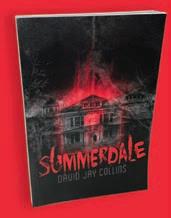
815-842-2888





bedroom w/remodeled kitchen w/ dishwasher and bathroom. Hard floors & plenty closets space. Laundry amenities on premises with heat $1250/mo. 773-369-1525



3 unit condo style building, North Lincoln Square, great investment property, low expenses, rehabbed 2/3 bedroom units, new kitchens with granite countertops, separate heat and

utilities, full basement, private parking, new roof, electrical and plumbing. 2720 W. Summerdale, Chicago. $539,000 Approx. income $50,000/ year. By owner. Call Louie (847) 361-9282
Photos of this listing:




